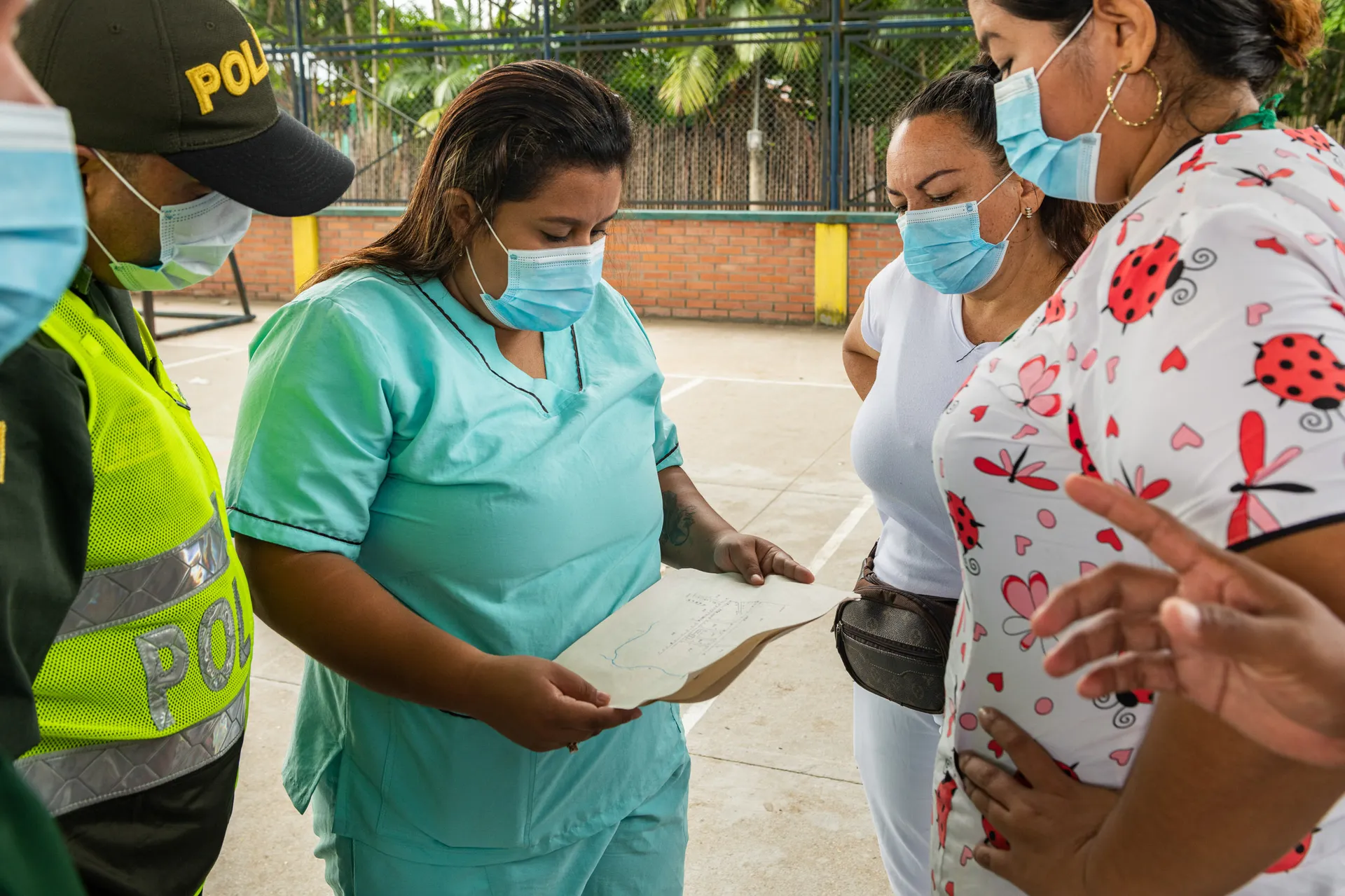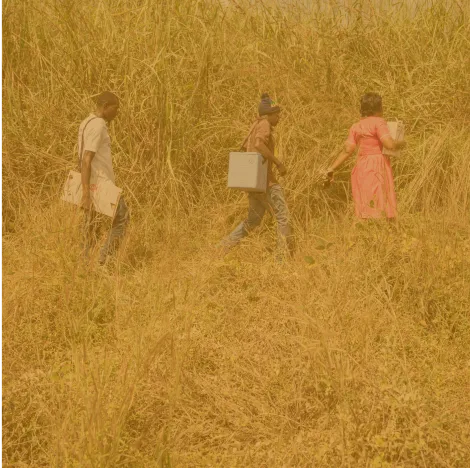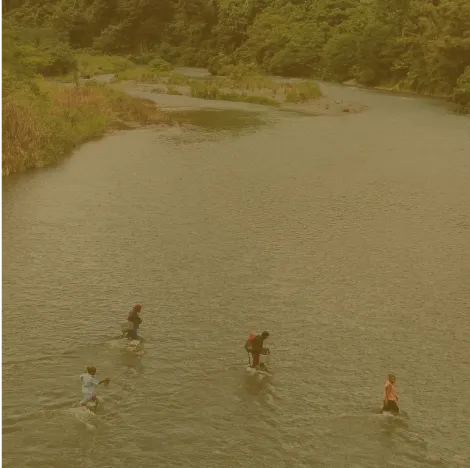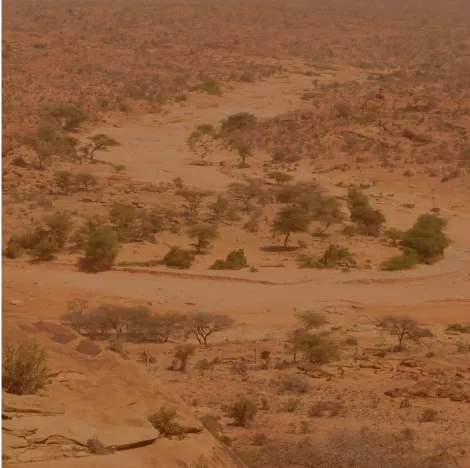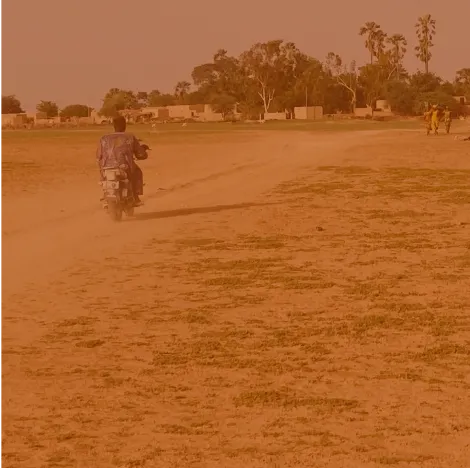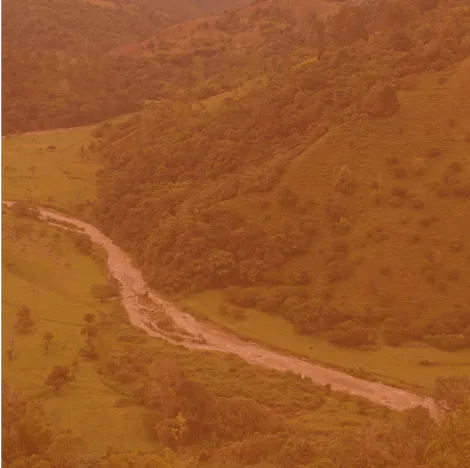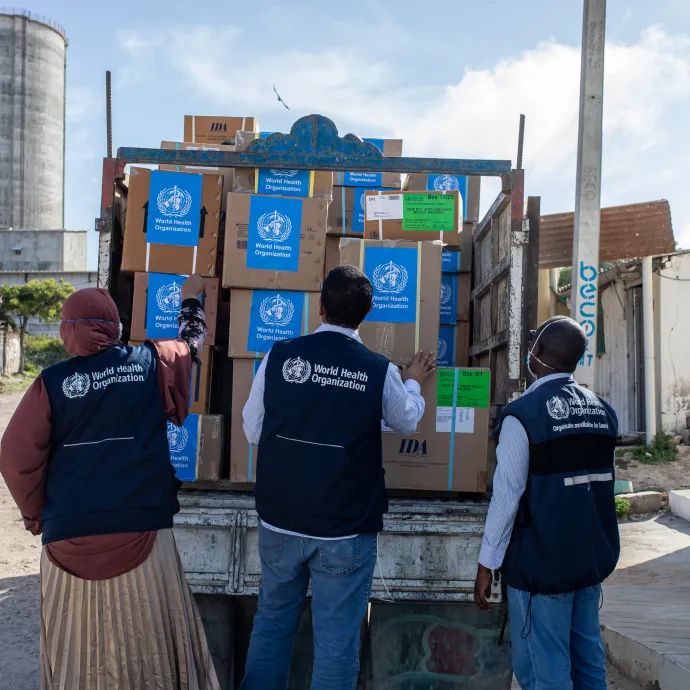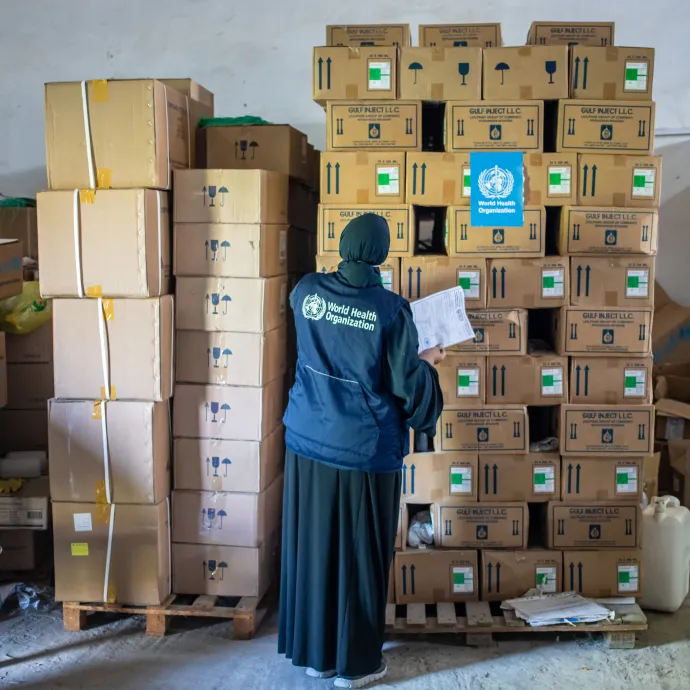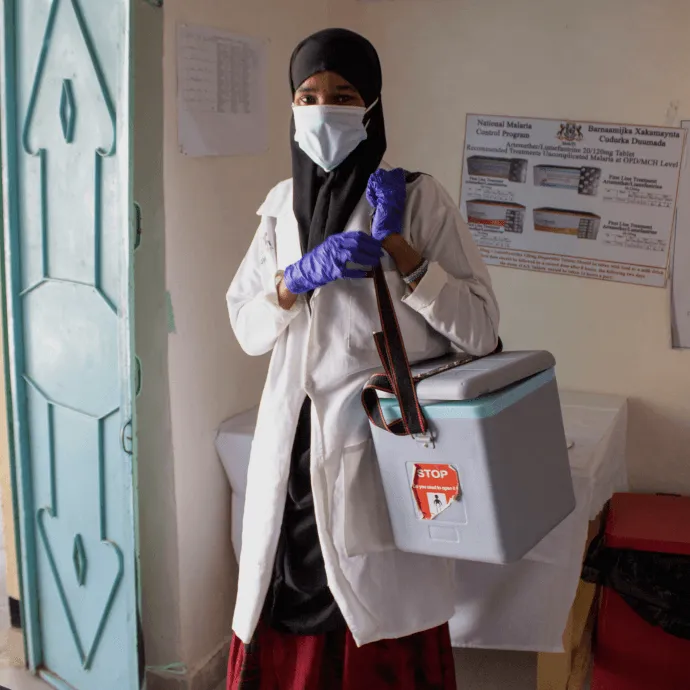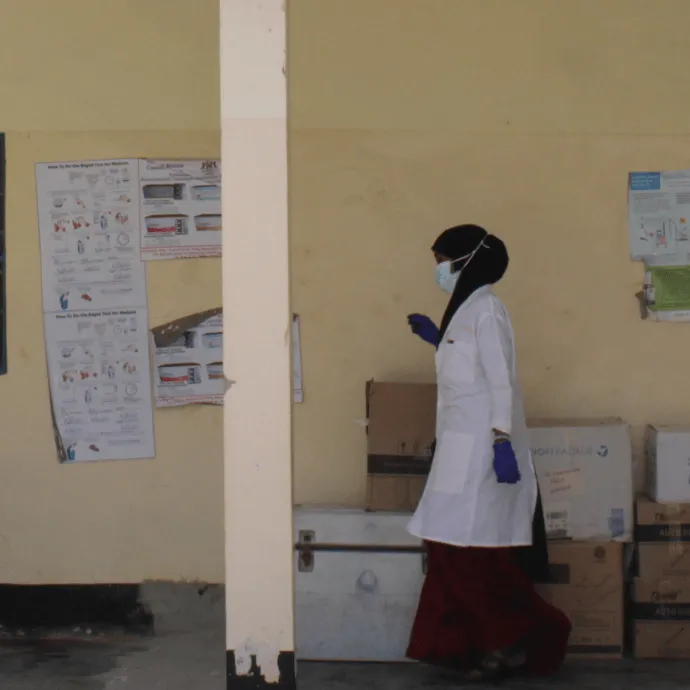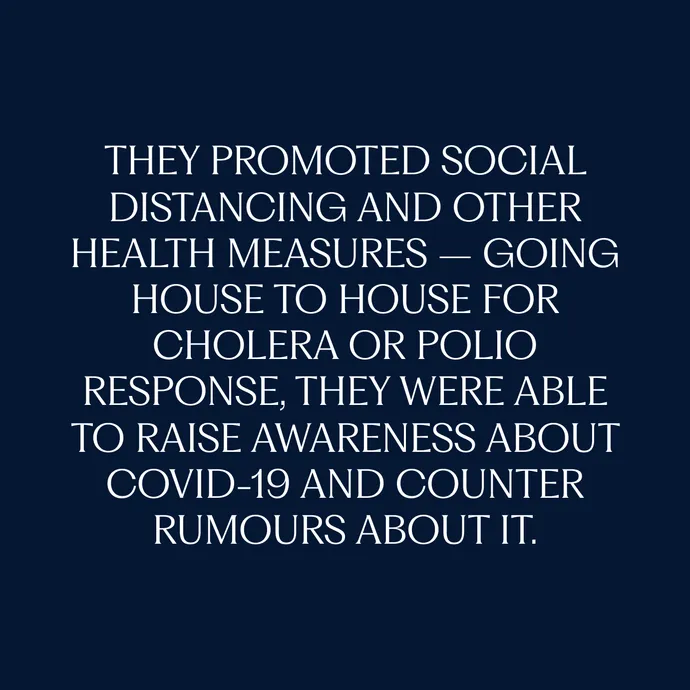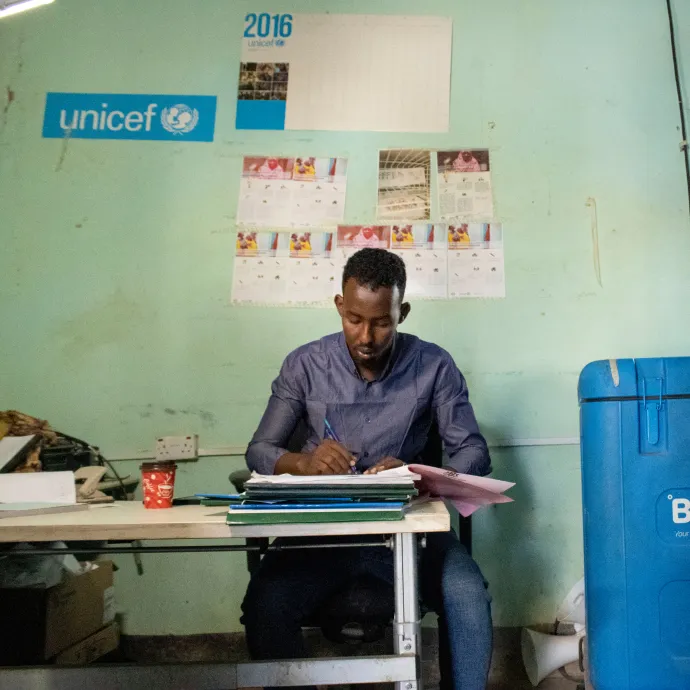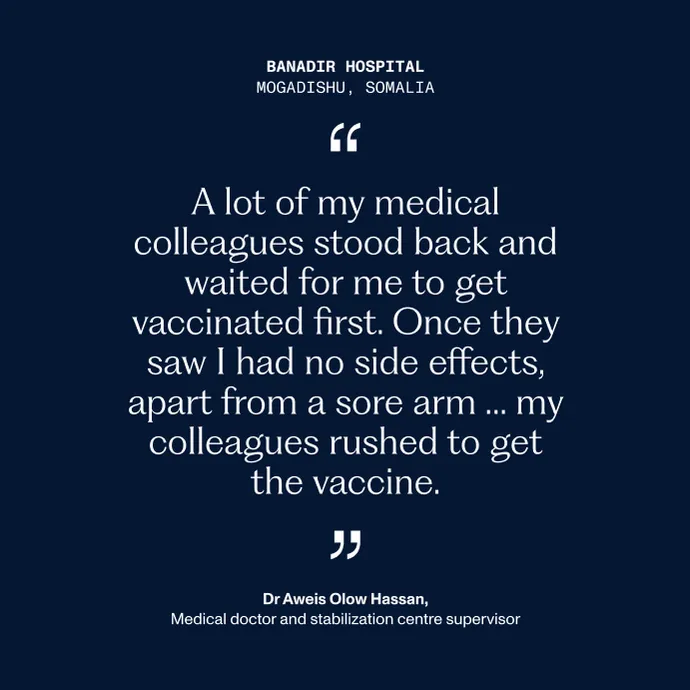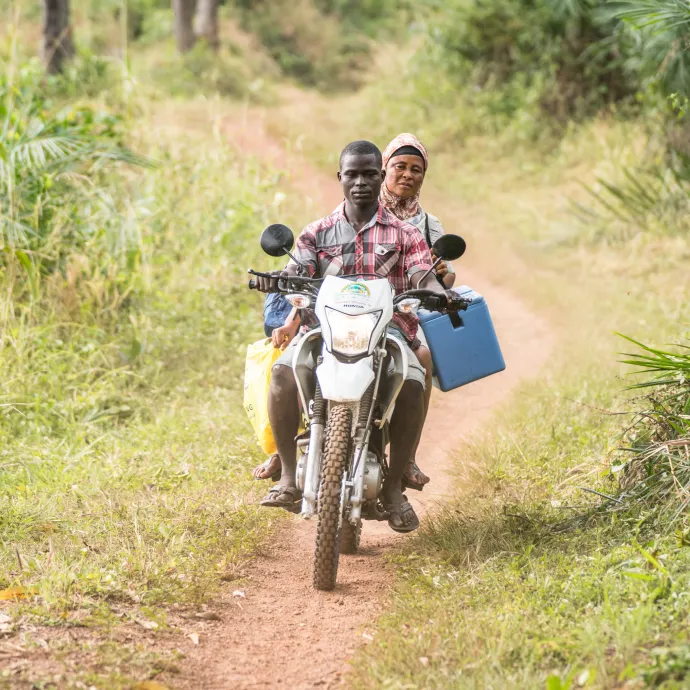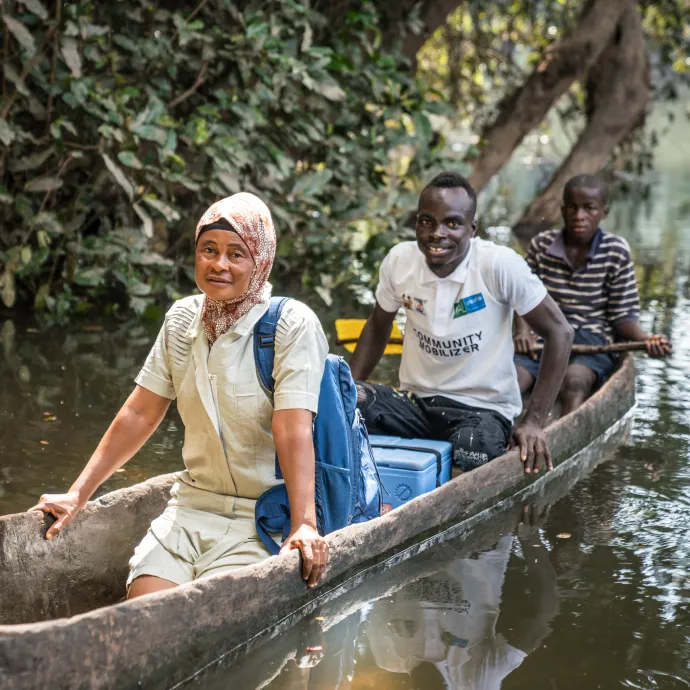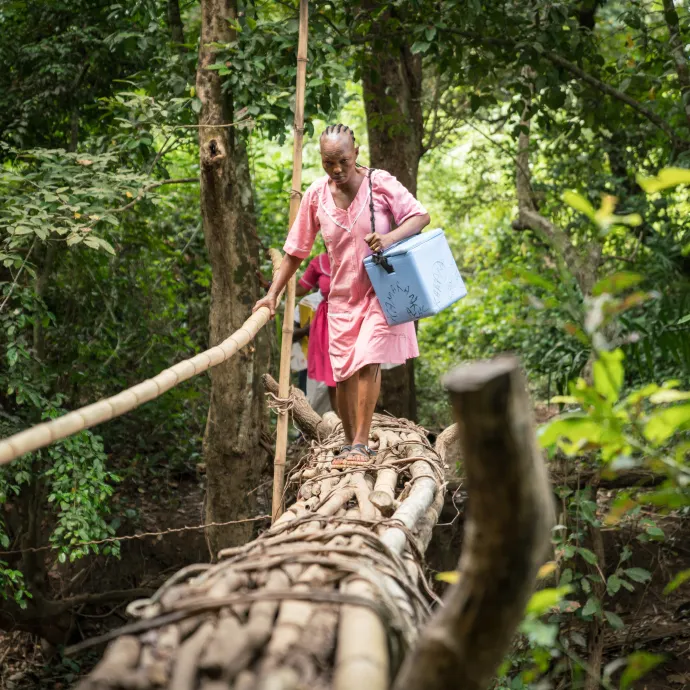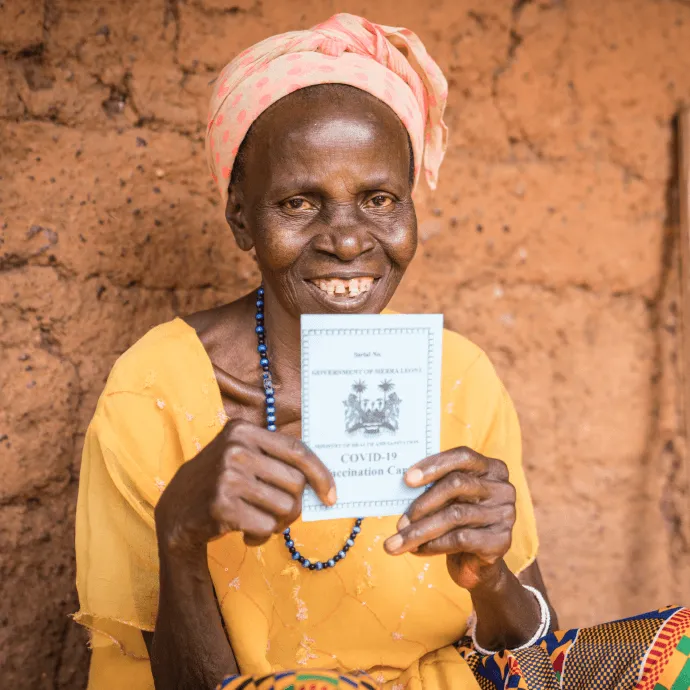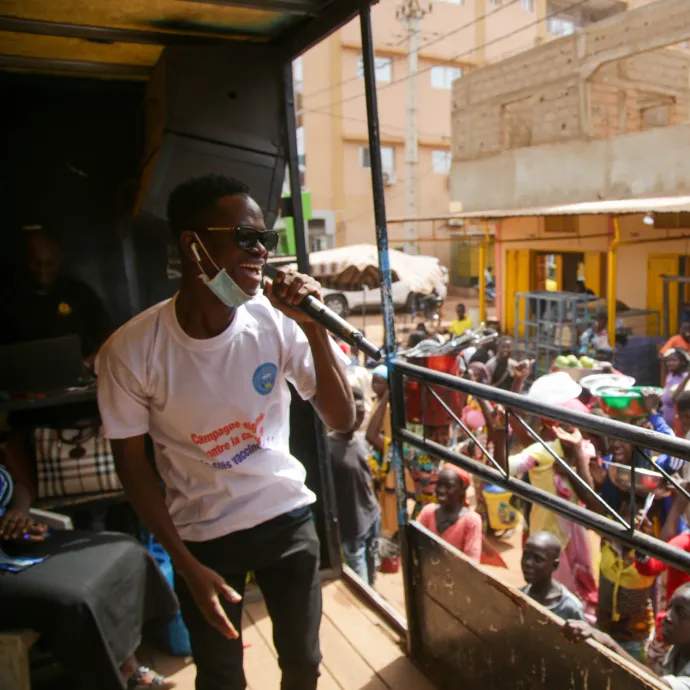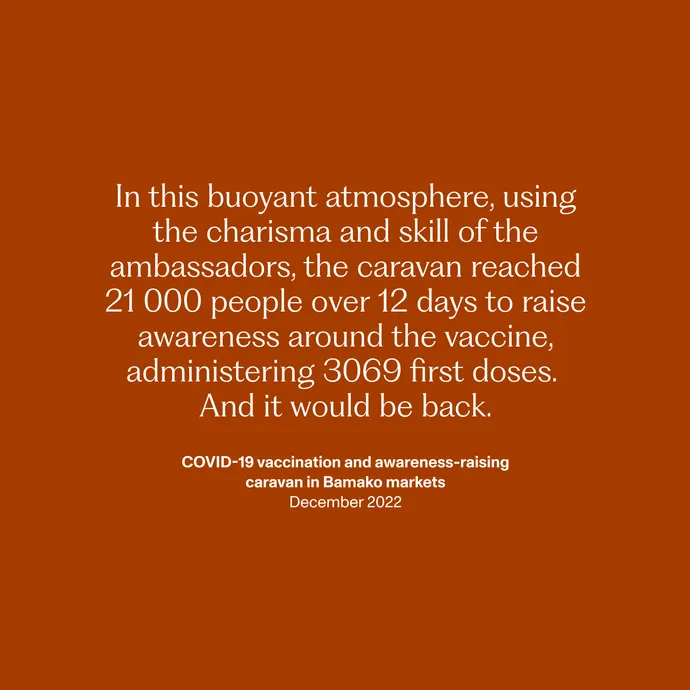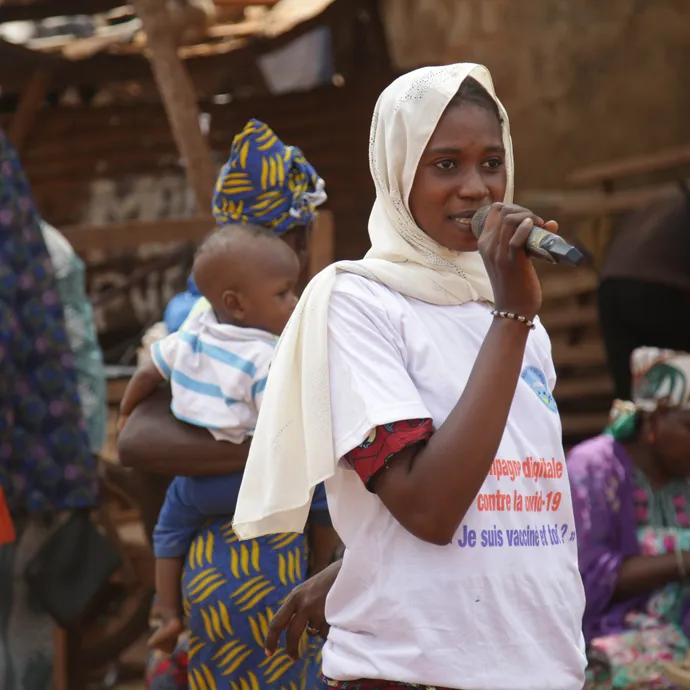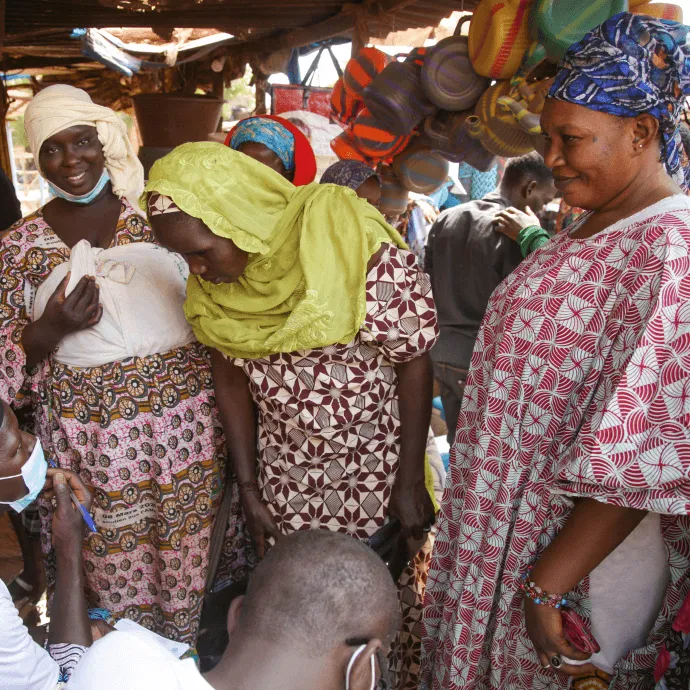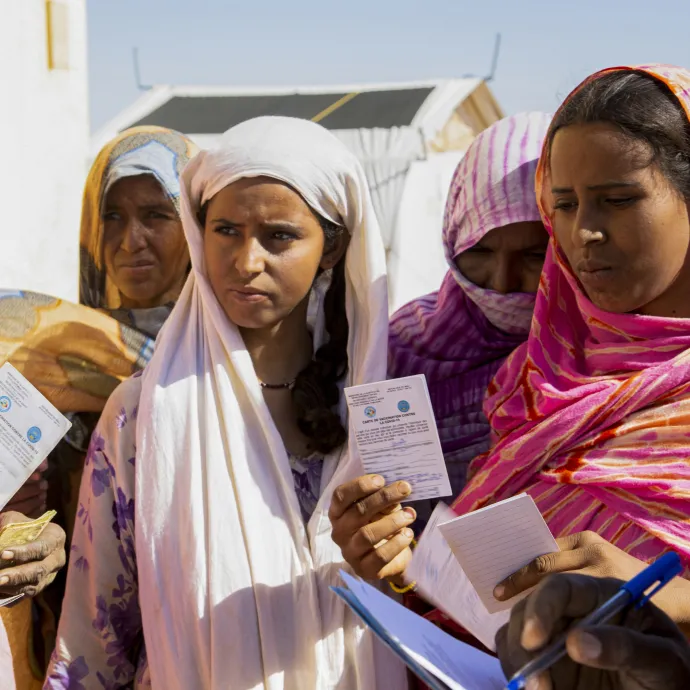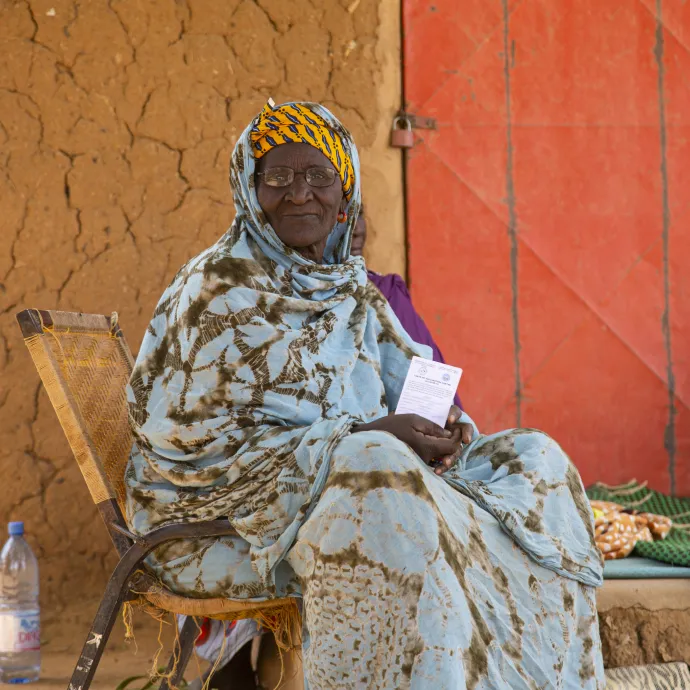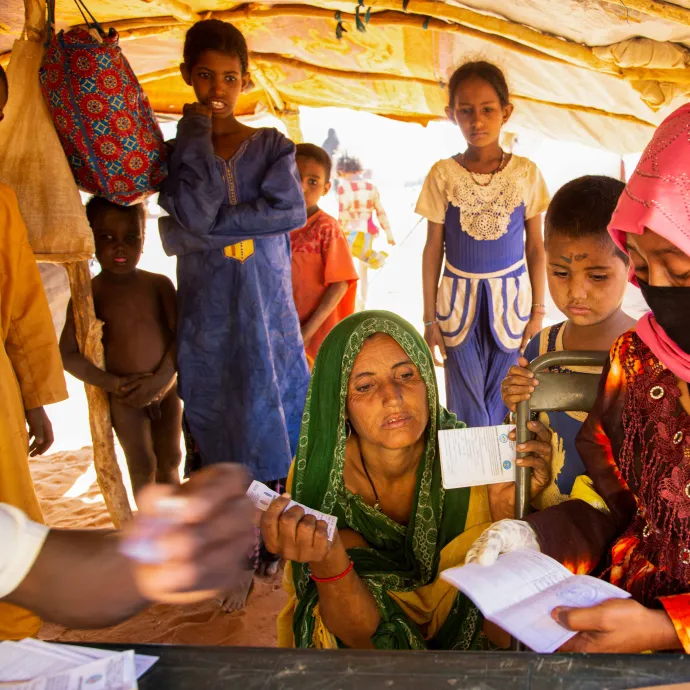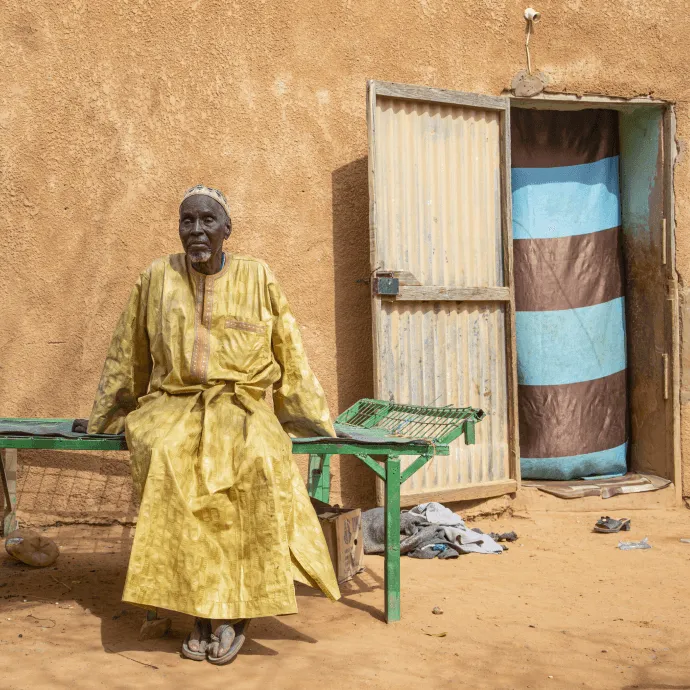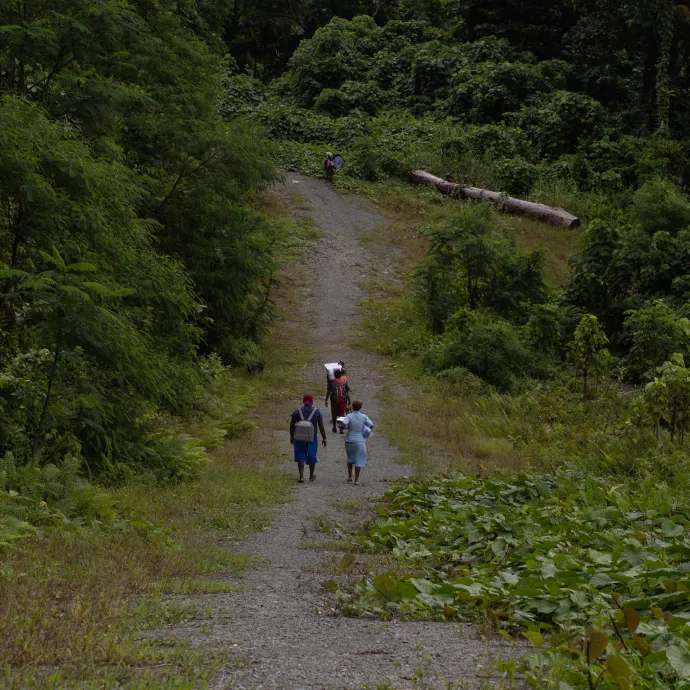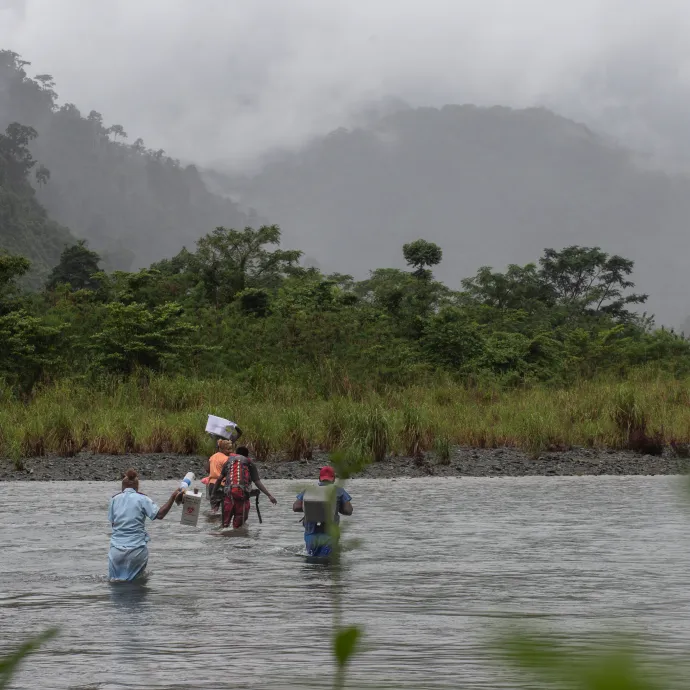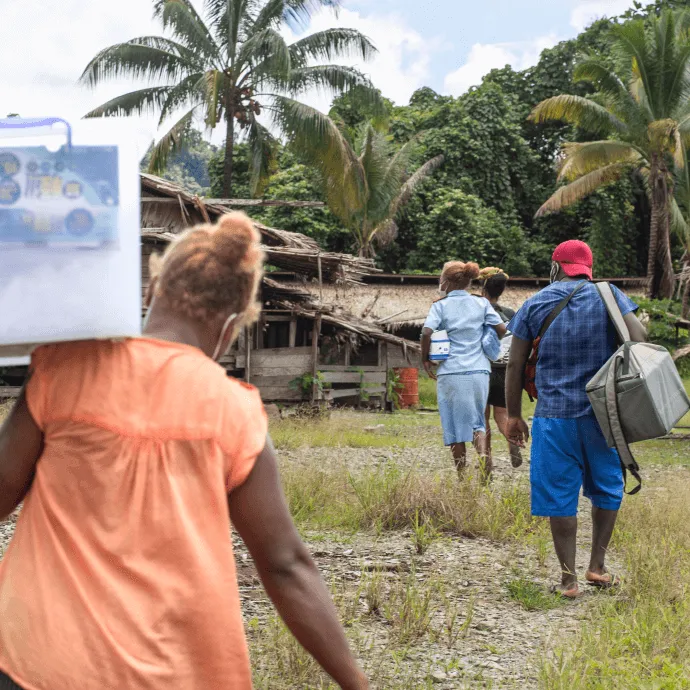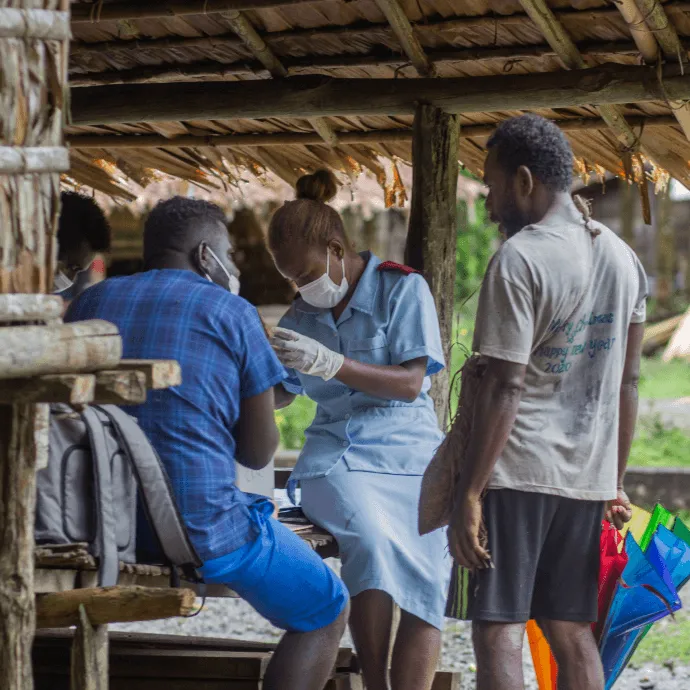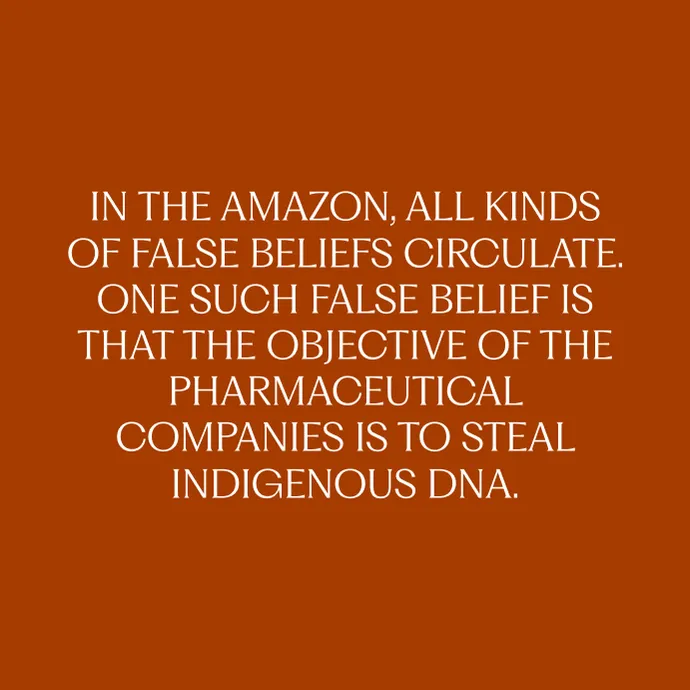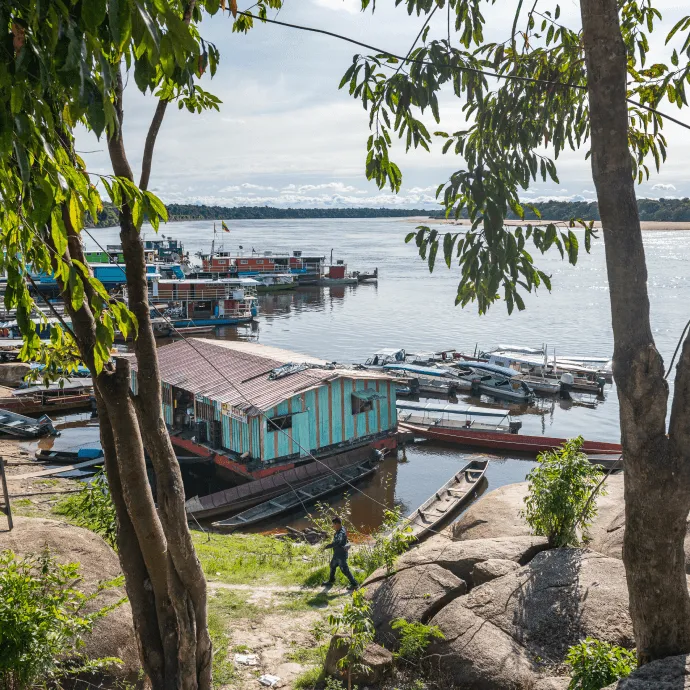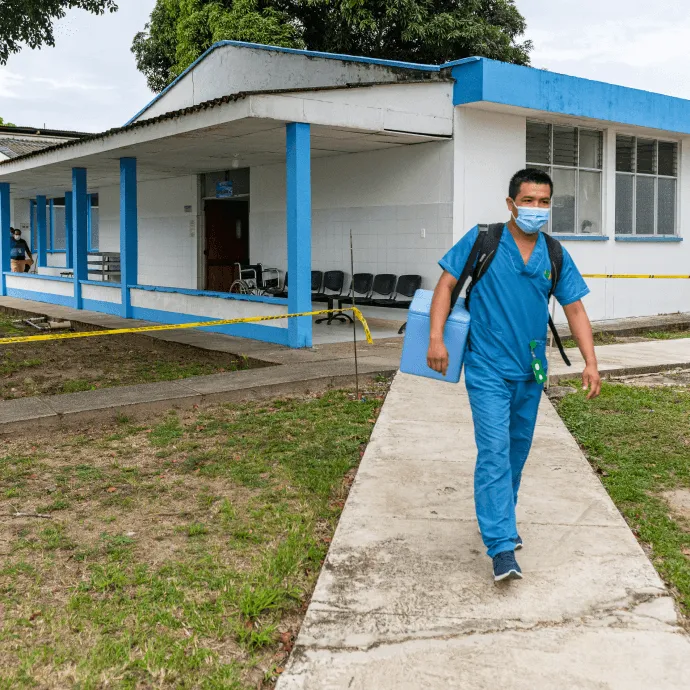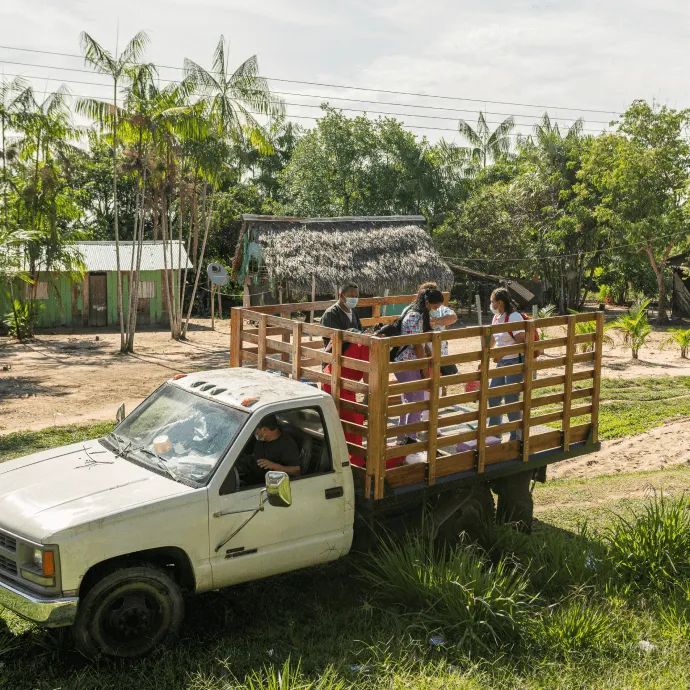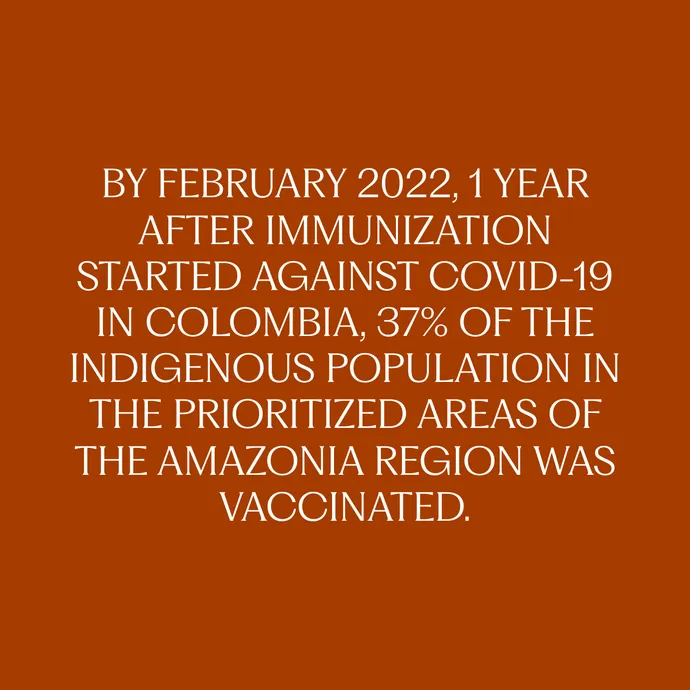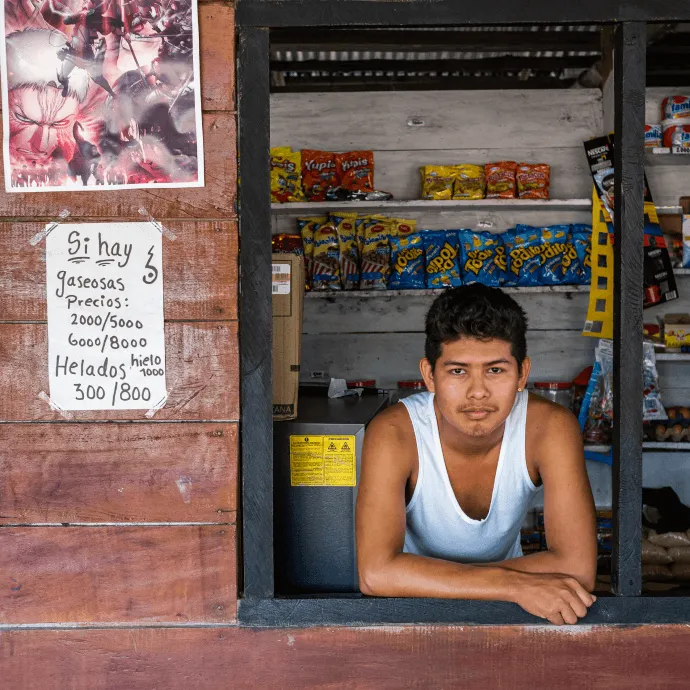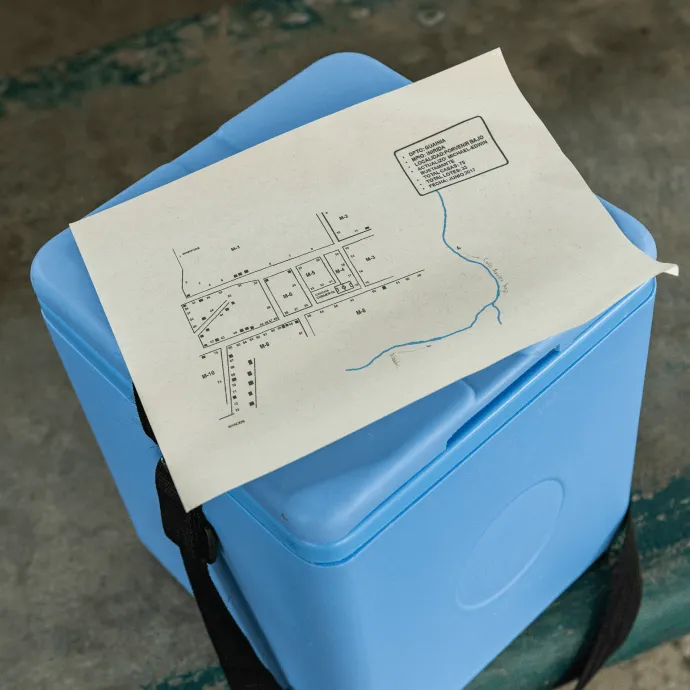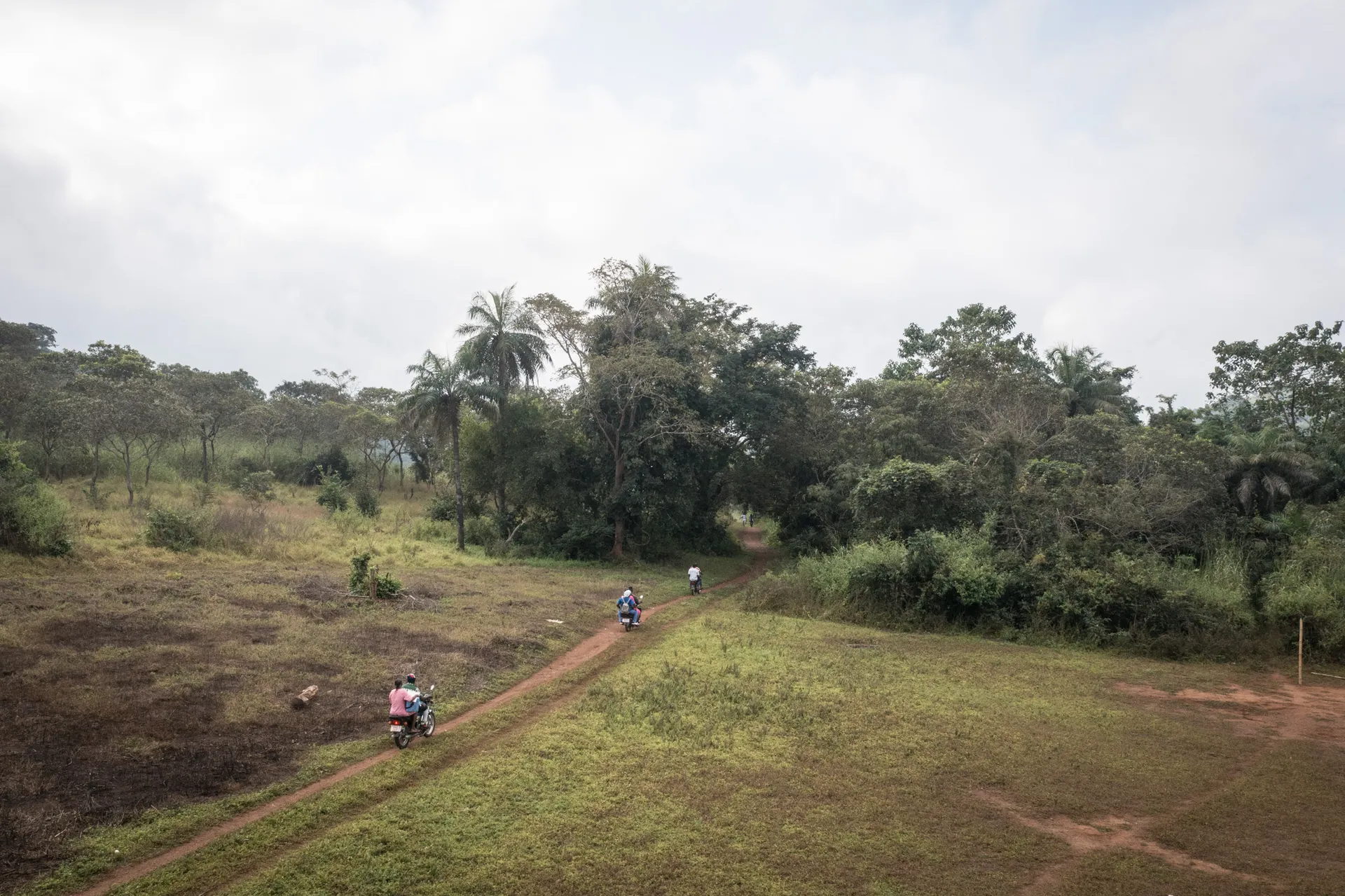
crossing the divide
Lessons in resilience: overcoming barriers to deliver vaccines
With the first batch of vaccines getting emergency use approval and global rollout getting under way in early 2021, doses reached 100 lower-income countries in weeks: but vaccination moved at a faster pace in more well-resourced countries. By March 2021, 607 million COVID-19 vaccine doses had been administered worldwide across WHO member states, mostly to higher-income countries. Yet as the virus killed 10 000 people a day, fewer than 1 in 100 people in lower-income countries had received their first dose.
For the next few months, export bans meant deliveries to lower-income countries stagnated, but as supply ramped up again at the end of the year, these countries still faced challenges absorbing these doses and reaching large parts of their population quickly. Countries that had had highly unreliable supply in 2021 had to re-establish their momentum for campaign planning and rollout when supply was finally ample in early 2022. By January 2022, 34 countries still remained below 10% coverage with 2 doses, and it was clear the next challenge would be providing tailored support to help countries overcome the challenges unique to their setting.
In defiance of some of the most extenuating circumstances, many countries vaccinated significant proportions of people against the virus.
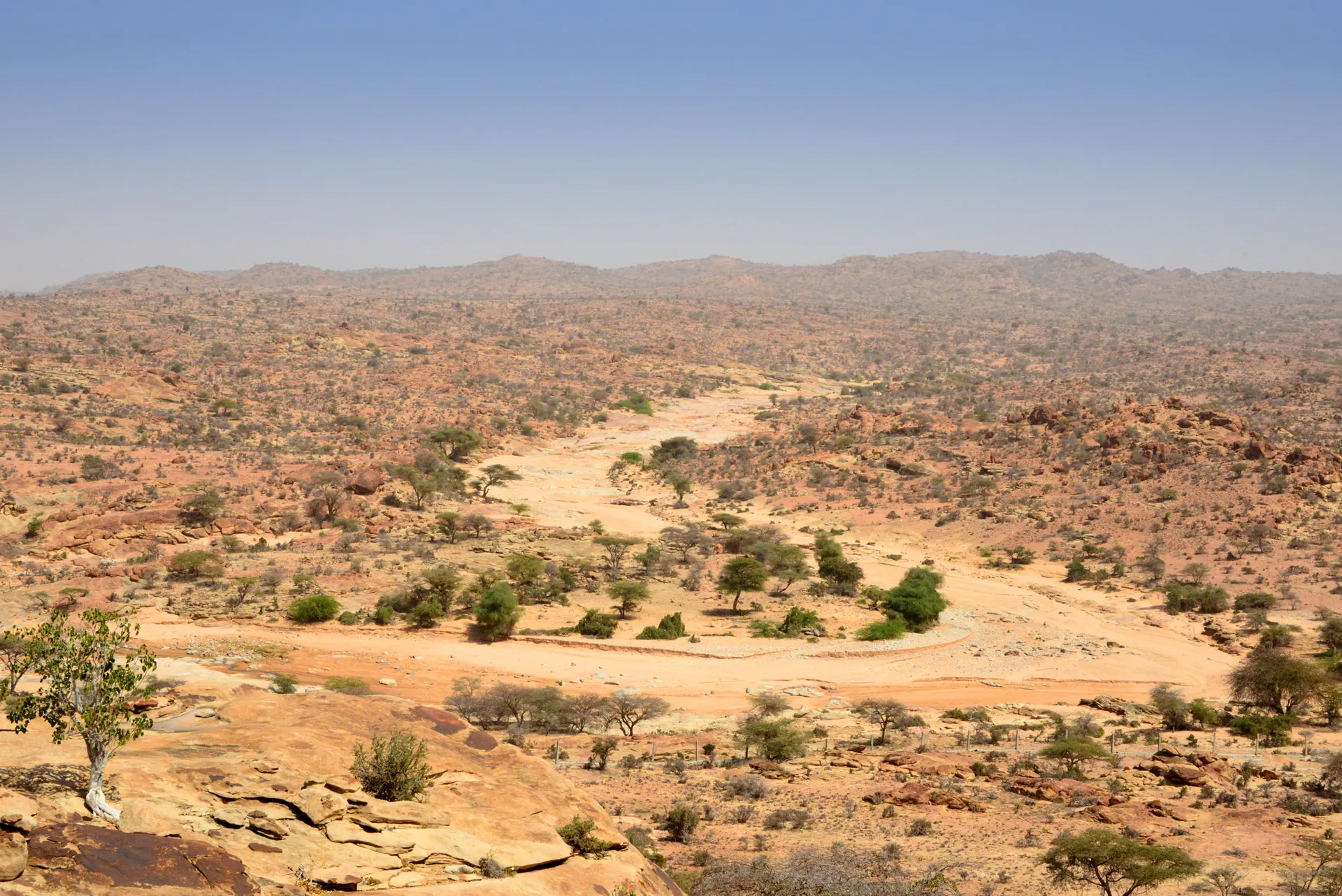
Somalia
Scaling Heights Against Strong Odds
Somalia COVID-19 vaccine primary series vaccination rate
Source: WHO-UNICEF COVID-19 Vaccination Information HubThree hundred thousand doses of COVID-19 vaccine arrived in Mogadishu, Somalia, on 15 March 2021.
It was a bright spot in a troubled place. At the time when the pandemic swept into the country in early 2020, Somalia had already long grappled with political instability and chronic civil unrest.
The worst drought in 40 years would soon threaten to cause a humanitarian disaster in the Horn of Africa, where Somalia is located, adding to the crisis. Rains failed repeatedly. Food insecurity and potential famine threatened millions. Children were dying in Somalia, Kenya, Ethiopia and other countries in the region. The struggle with COVID-19 continued in Somalia after that first shipment of vaccines in 2021, and the Delta variant of the pandemic was yet another blow. Vaccine supplies stopped suddenly and Somalia would not see another COVID-19 vaccine roll off a newly delivered pallet for 5 months. Somalia has since been able to fend off famine with the help of humanitarian assistance. Though crisis still threatens some districts, and new calamities have arrived - including recent large-scale flooding, which displaced 345 000 people.
Even so, over 37% of Somalis were able to be fully vaccinated for COVID-19 by October 2022
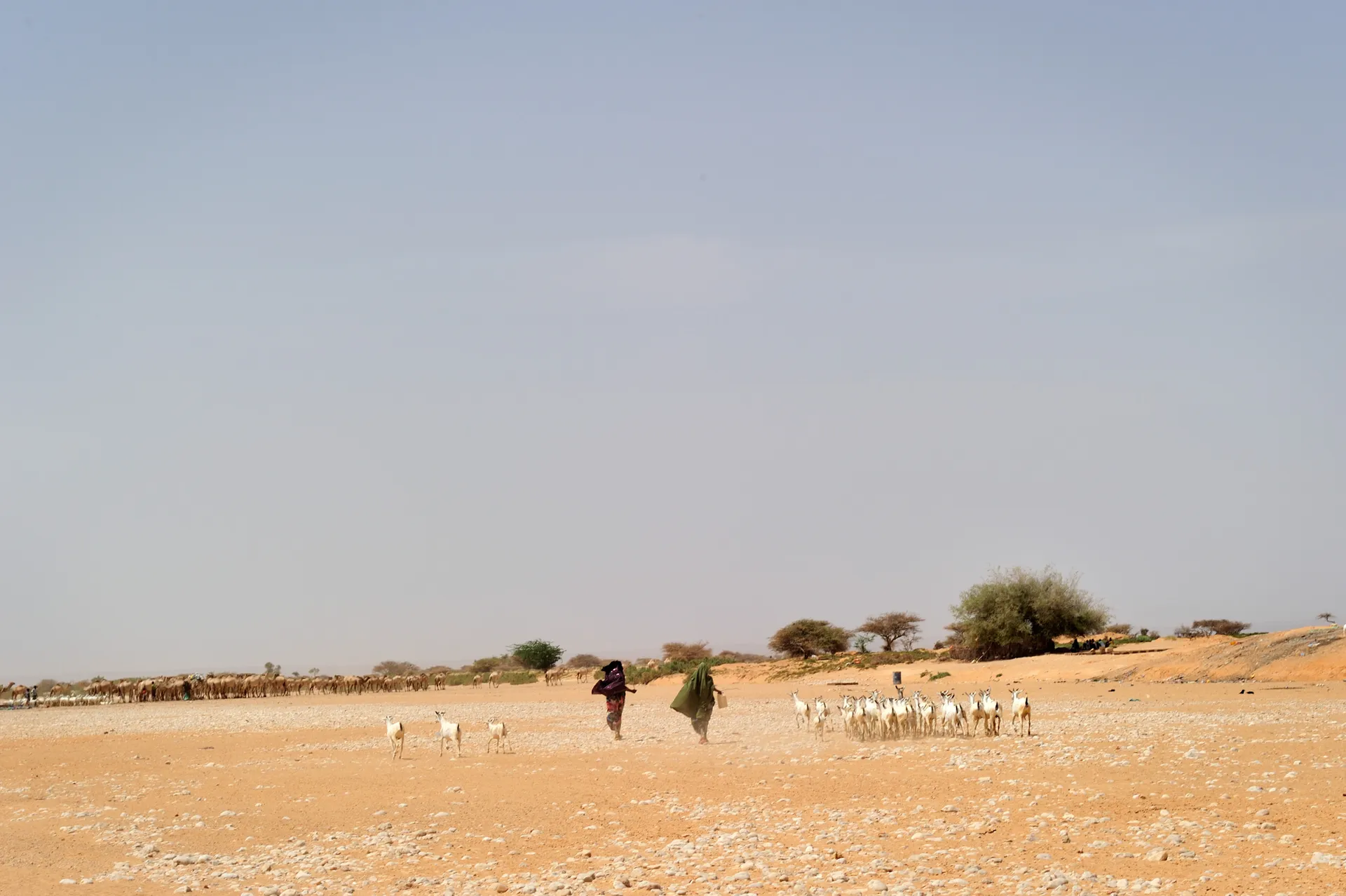
Average Temperature
30°C
Somalia:
26% nomadi populationSource
Heavy flooding and prolonged drought
Threatening food insecurity
Somalia priority group vaccination coverage rates
That total coverage rate in October 2022 included 66% of Somali health and care workers and 68% of the country's population aged 50 years or older. This is compared to 22% of health and care workers as of June 2021, and 34% of those aged 50 years or older.
Earlier in the Somali vaccine rollout, in mid-2021, two-thirds of vaccine recipients were men in a country with a 50.1% female population. The vast majority of COVID-19 vaccinations in Somalia, 92.5%, were in urban settlements. This is despite more than a quarter of Somalis living a nomadic life outside of the cities.
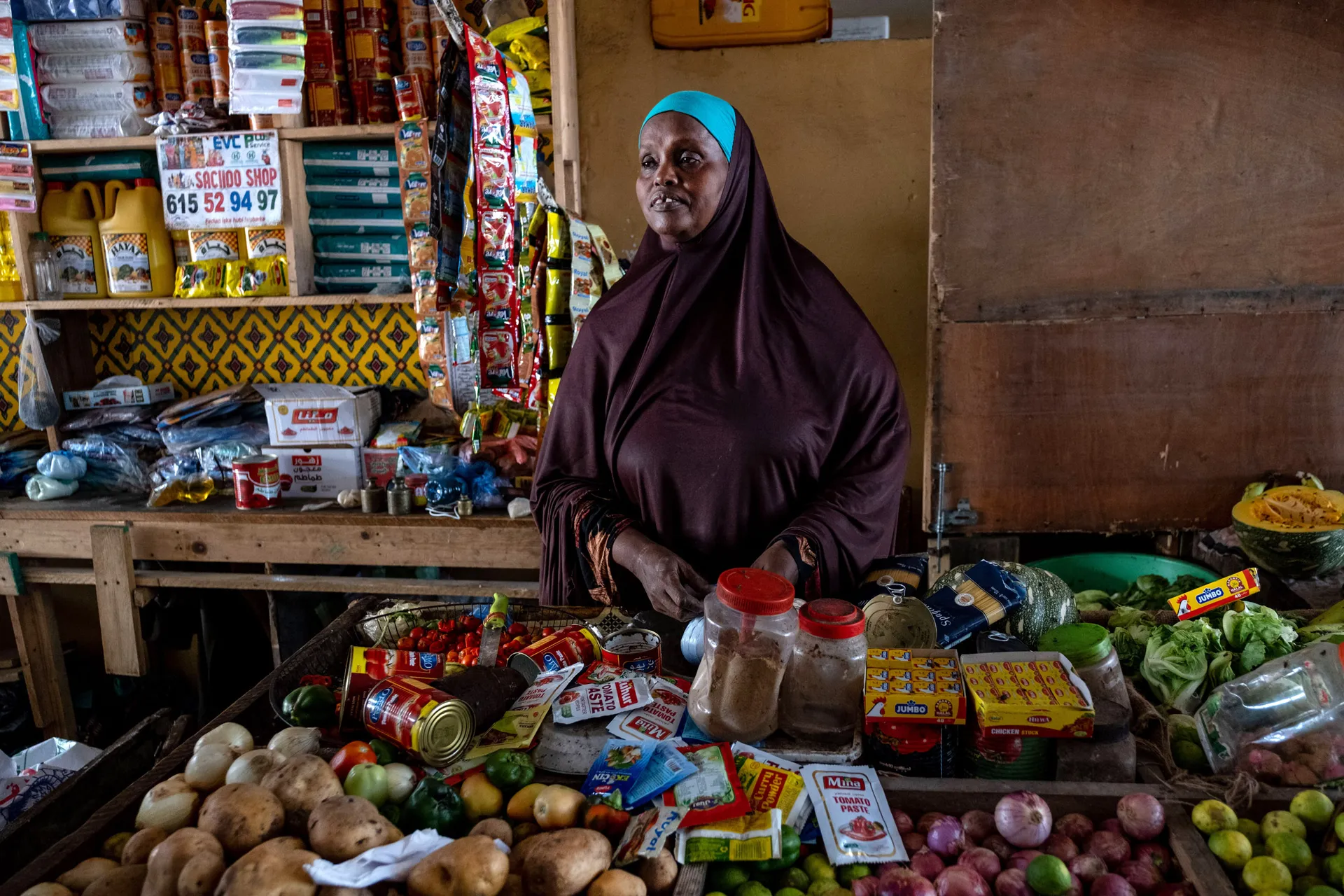
MOGADISHU, SOMALIA Saido Ali, a shop keeper at Ansaloti food market in Mogadishu. Food prices were driven up by the COVID-19 pandemic, and local armed conflict, making it difficult for people in Somalia to buy enough food for their families.
By the end of October 2022, a national vaccination campaign helped reach 2.4 million internally displaced people and 370 000 nomads.
Vaccinated Somali people by settlements
June 2021
Key:
Urban
Rural
Internally Displaced
Nomadic
Refugee
And as of December 2022, 46% of vaccine recipients were women.
This was due to a concerted effort to make it more convenient for women to be vaccinated, to reach them in the markets where they work, and to directly address concerns they were expressing. The numbers rose quickly to make up lost ground. How did a country with so many challenges bring about such a remarkable increase in vaccine uptake?
It took strong political commitment.
Somalia launched 9 mass vaccination campaigns during the course of the pandemic. They engaged multiple goals, including outreach integration in efforts against measles, cholera and polio. One of the biggest mass vaccination campaigns for COVID-19 was a 10-day campaign in September 2022. The goal was to administer between 3.5 million and 4 million doses of COVID-19 vaccine throughout the country. Robust UN agency and partner coordination helped: there were multiple infusions of quick-action funding that kept campaigns moving. Somali health authorities and partners sought out and engaged influential leaders, including religious and nomadic elders and women’s groups. Campaign planners made effective use of situational, locally informed planning or ‘microplanning’ to locate and connect with key populations and tailor strategies to meet vaccine demand. Relevant and persuasive communication was crucial. While many Somalis were keen to be vaccinated, there was still misinformation and rumours circulating widely on social media and among text-based chat groups.
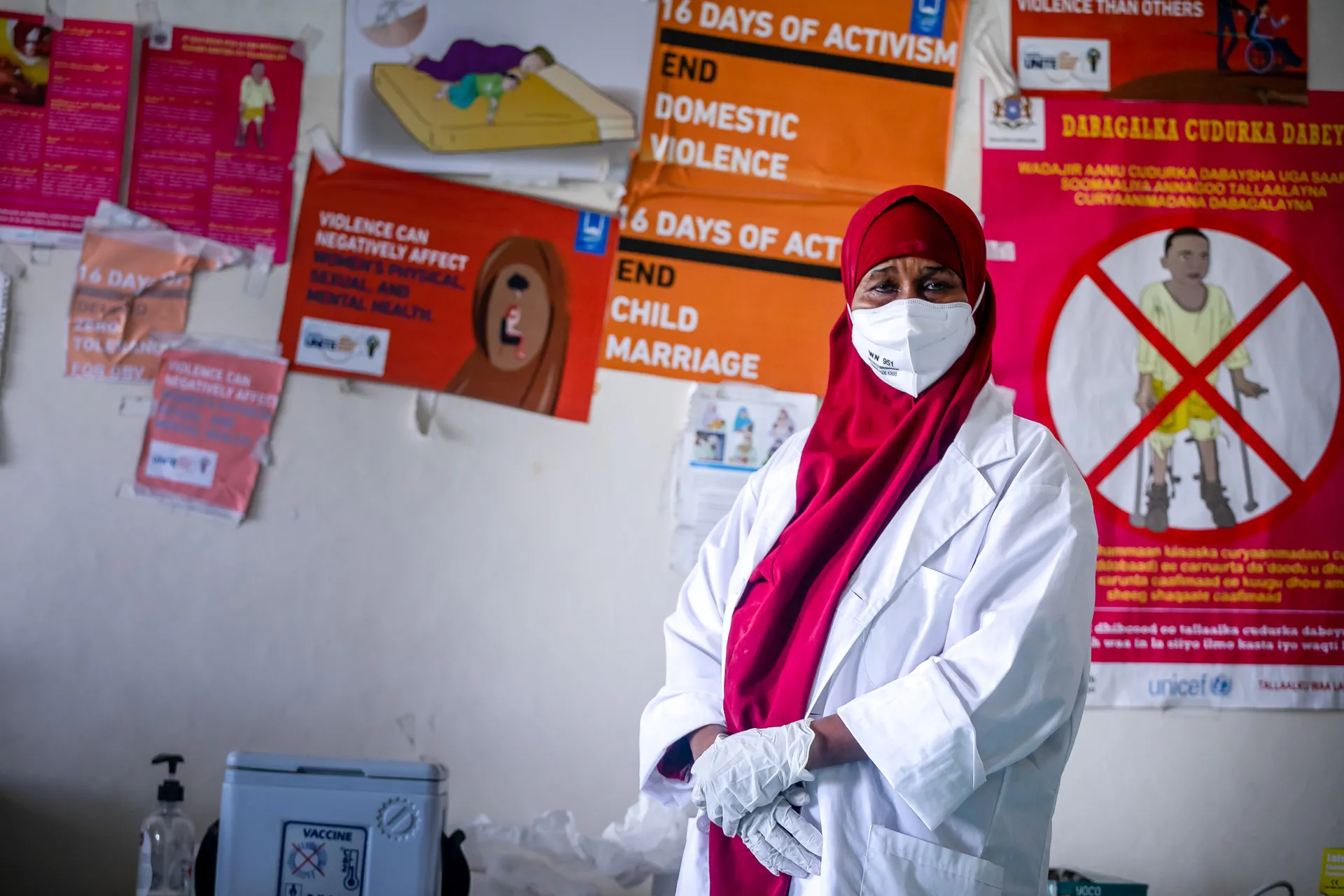
Waris Awil Muse, a health and care worker, poses for a portrait in De Martini Hospital in Mogadishu, Somalia.
There is currently 1 SIM card for every 2 Somalis. As many as 86% of Somalis have access to mobile phones.
To support the COVID-19 vaccine rollout, the Somali telecom provider campaigned with mass texts and introduced health ministry vaccination messages that users heard while making routine calls. This was among other outreach efforts, including messages about vaccine safety and efficacy, many specifically for women and people who were pregnant with heightened perceptions of risk and fears of infertility. It was the country’s polio programme that pioneered the use of microplanning to locate unvaccinated people. That experience was put to effective use for COVID-19. Somalia has a large number of vaccinators with experience in its polio programme. They work within broader networks of social mobilizers, community elders and influencers. Even before COVID-19 vaccine supply stabilized, the country was able to call on them.
With multilateral support, Somalia deployed nearly 6000 teams across the country in its September 2022 campaign, made up of more than 30 000 vaccinators, data assistants and social mobilizers.
Planners took extra steps to ensure they were making it more convenient for women to get vaccinated. They did this by using mobile vaccination sites and putting them in markets where women work. They crafted messages to assuage the specific fears women were expressing during the vaccination campaigns. Health and care workers led by example, rolling up their own sleeves to encourage vaccine acceptance at the front line. By the end of October 2022, a national, phased campaign led by the Government of Somalia had reached 3.2 million people.
That was 90% of its campaign target.
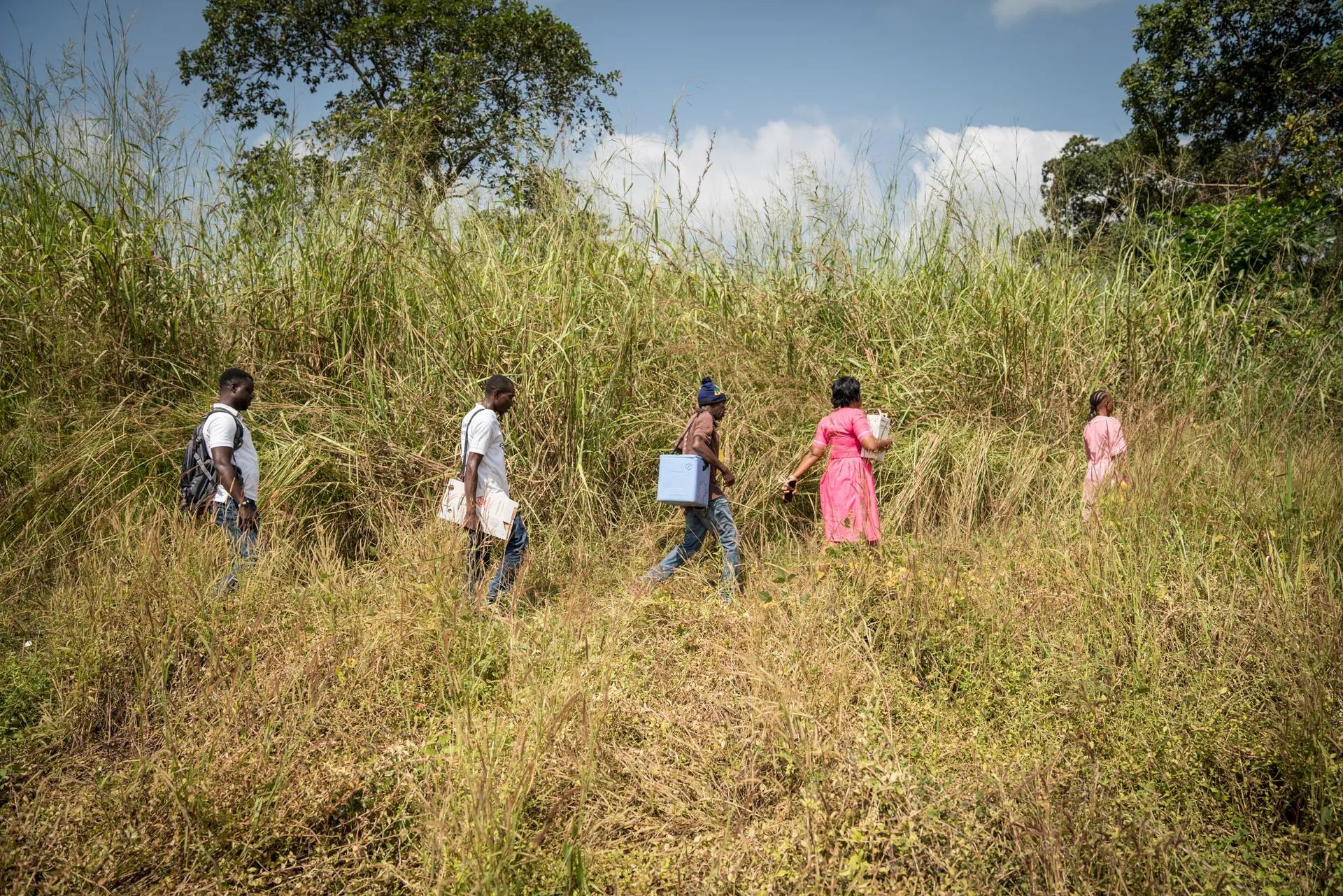
Sierra Leone
Step by step
Sierra leone COVID-19 vaccine primary series vaccination rate
Source: WHO-UNICEF COVID-19 Vaccination Information HubBy motorcycle or bike, aboard a dugout canoe or carried on foot across a bamboo bridge, Sierra Leone’s vaccines got through.
This West African nation is covered by grassland, savannah and dense forest, with many isolated villages beyond the reach of motorized transport. In the rainy season, getting to them is even harder.
Sierra Leone’s COVID-19 vaccine rollout began in March 2021. A year later, only 14% of its 7.5 million people had been vaccinated. But within the next 12 months, the rate soared. Thanks to 12 mass vaccination campaigns, and helped by the tenacity of its health workforce and the energy of community mobilizers making a strenuous collective effort to reach remote communities, Sierra Leone saw 46% of its total population fully vaccinated against COVID-19 by December 2022.
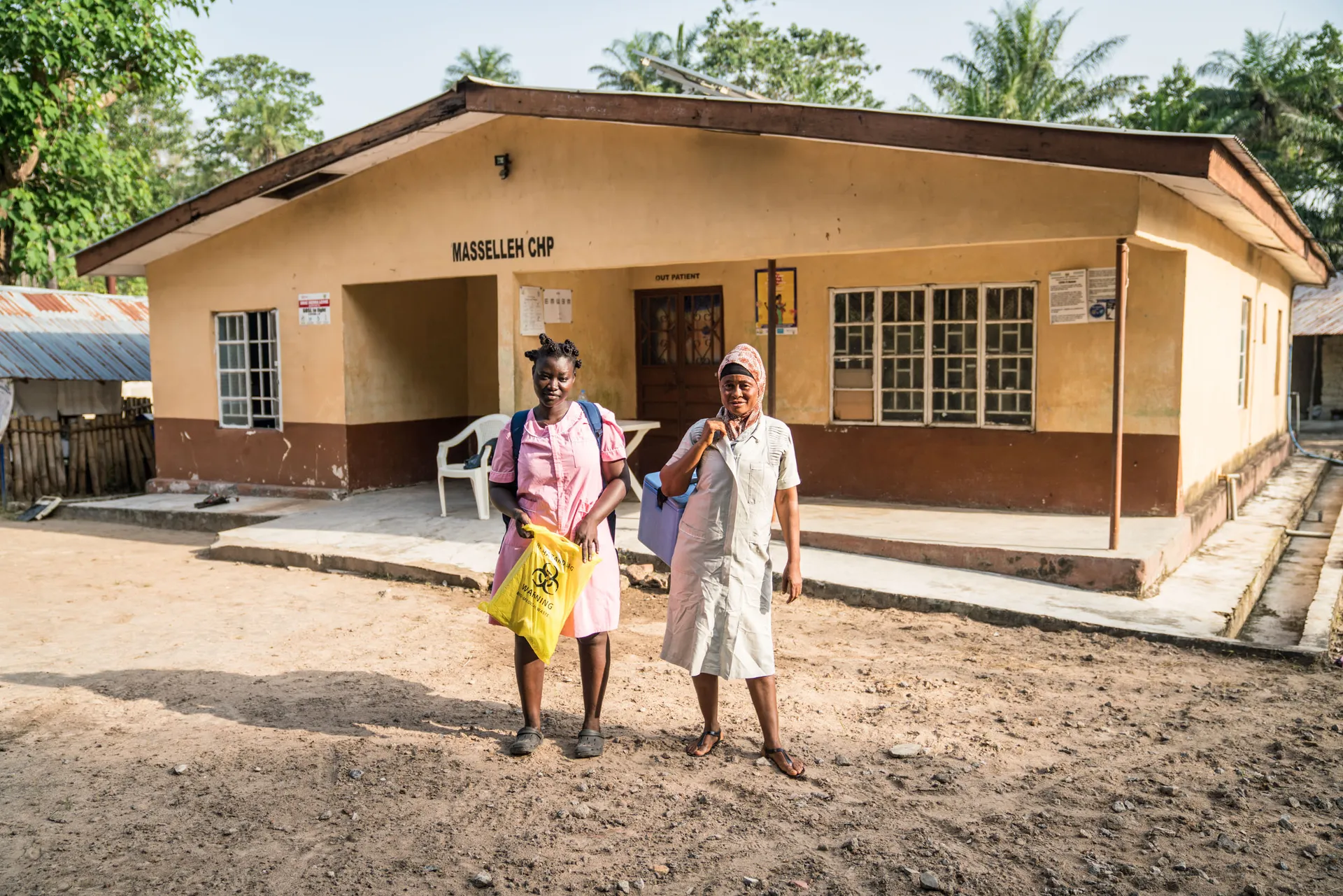
Makontakay, 7 km from Masselleh
community health post
Nurse Kai (right) and Nurse Koroma (left) head out from Masselleh Community Health Post to conduct mobile vaccination clinics.
Not every remote village can easily access medical care. This is certainly true in the forested northern district of Bombali.
The community of Makontakay is 7 kilometers via dirt track from the nearest health clinic, with numerous rivers to cross. The journey is only for those able to walk or ride a motorbike, which creates an additional barrier for the elderly or unwell. Likewise, the villages of Mamanso and Mansunthu in Karene District are hard to reach – separated by a river that runs high in the wet months. And so, the vaccines had to come to them.
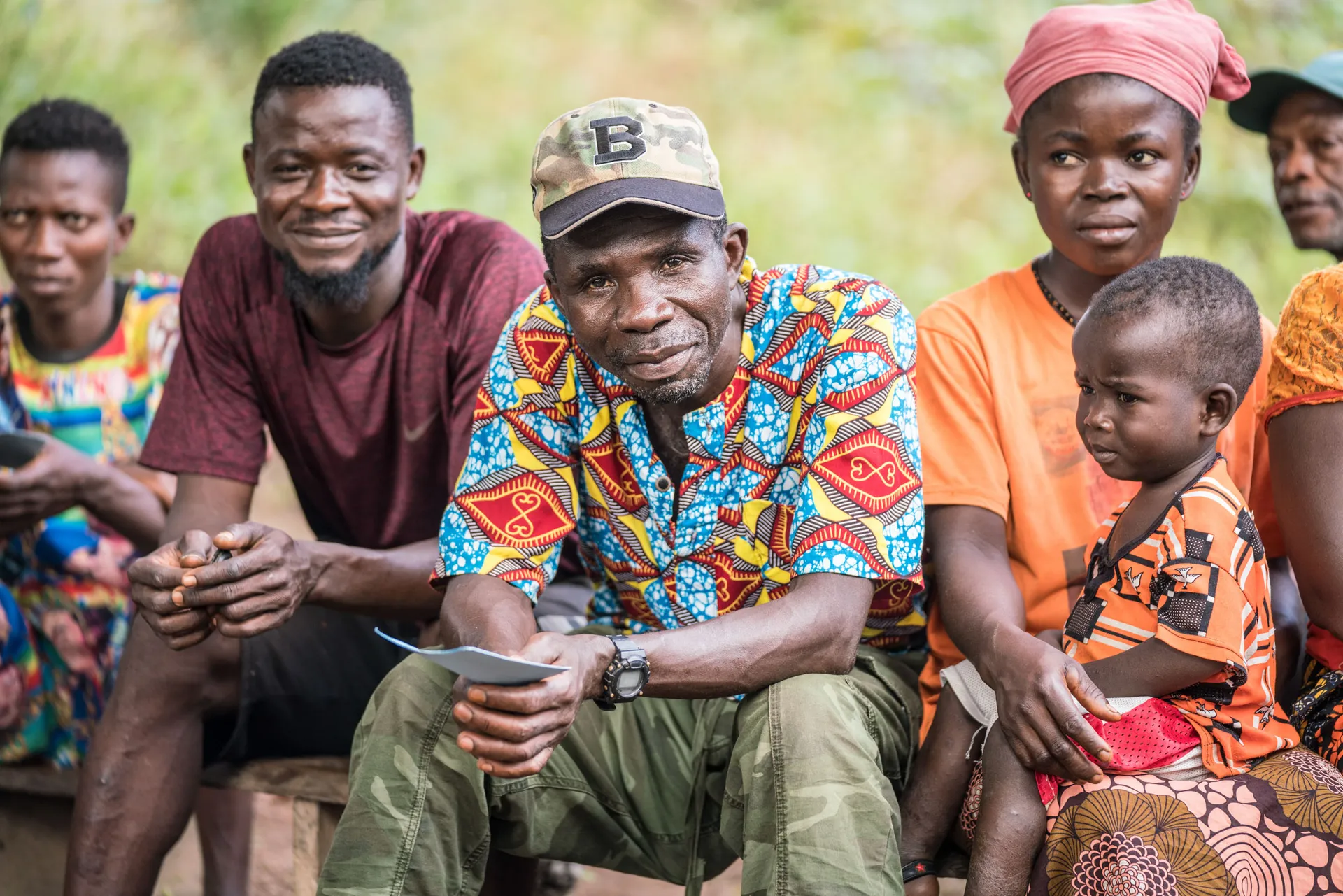
Before the mobilizers came, we were all very afraid to take the vaccine. No one wanted to take it because they thought it would kill them. But when they came and talked to us about the virus and the vaccine most of us changed our minds. Many people here have even had three doses!
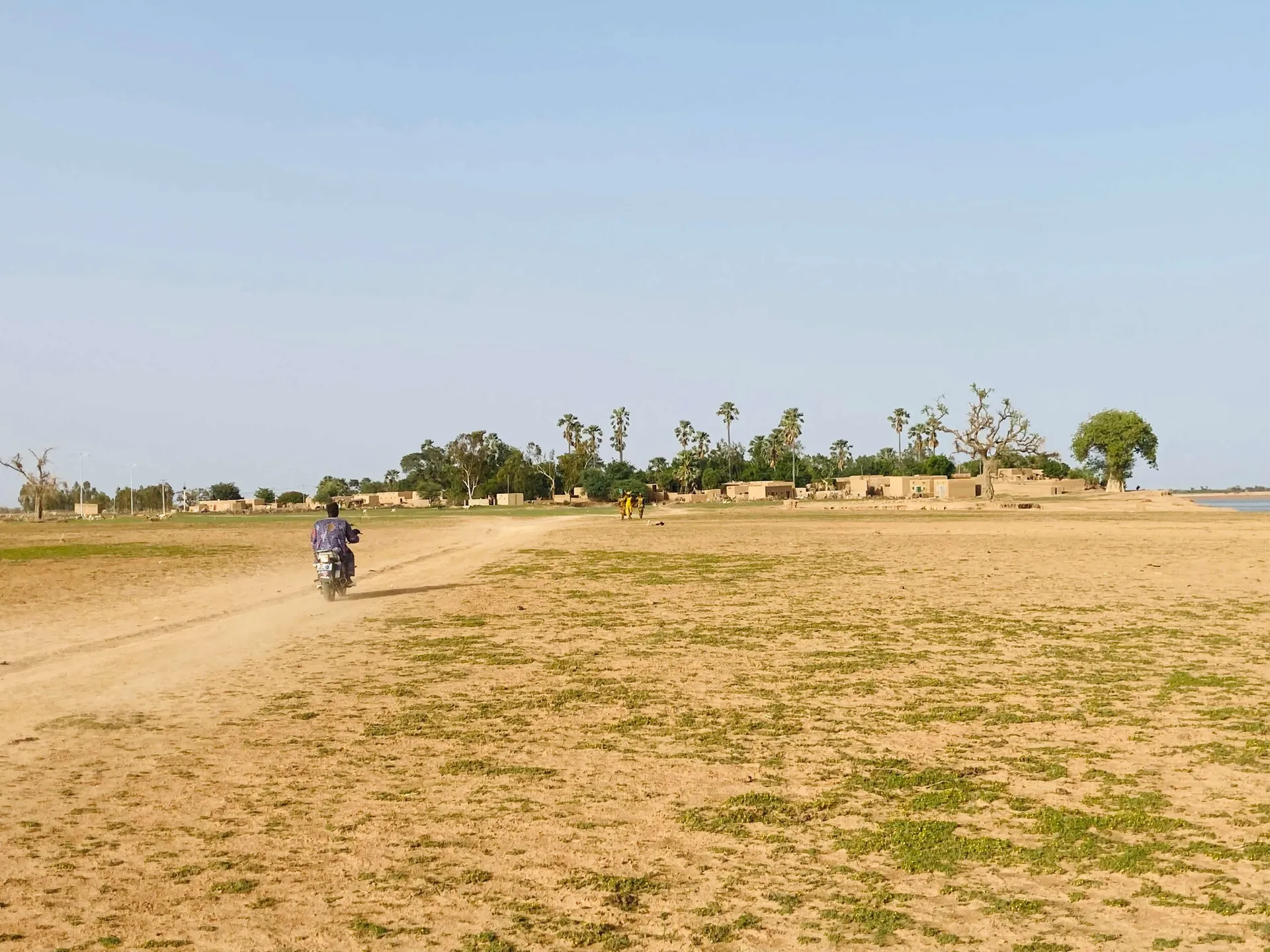
Mali
The power of song
Mali COVID-19 vaccine primary series vaccination rate
Source: WHO-UNICEF COVID-19 Vaccination Information HubVaccinators brought a party to the people in Mali, as part of a month long COVID-19 vaccination campaign that allowed Mali to reach the target of 10% of the population vaccinated in November 2022
This mobile vaccination unit visited Yirimadio, in the capital city of Bamako. Young and old alike were offered the opportunity to receive a vaccine within the familiarity of their local market.
To encourage them to get vaccinated, outreach health and care workers took a unique approach with their pop-up clinics – and they brought entertainers along for the ride.
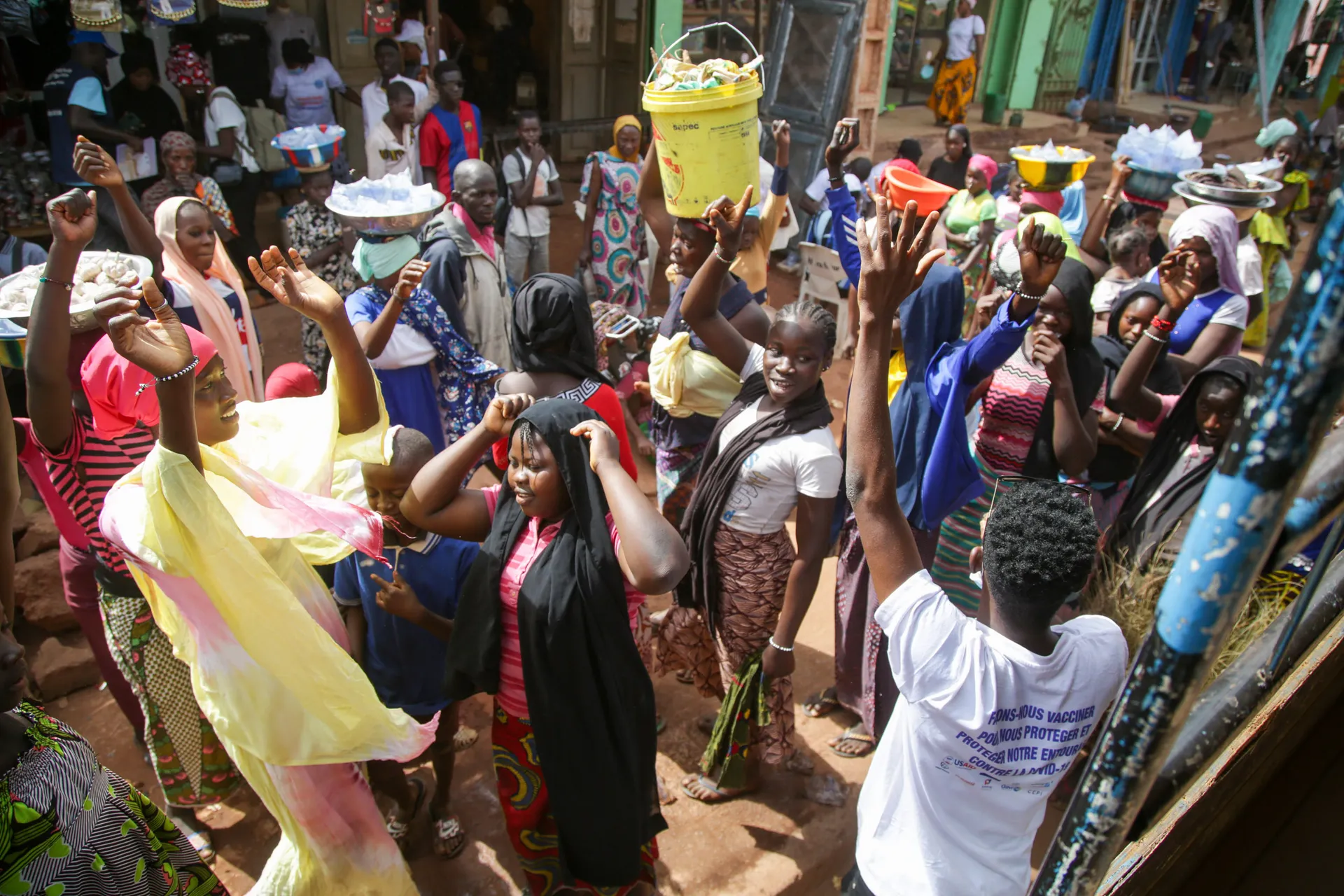
YIRIMADIO MARKET
Bamako, Mali
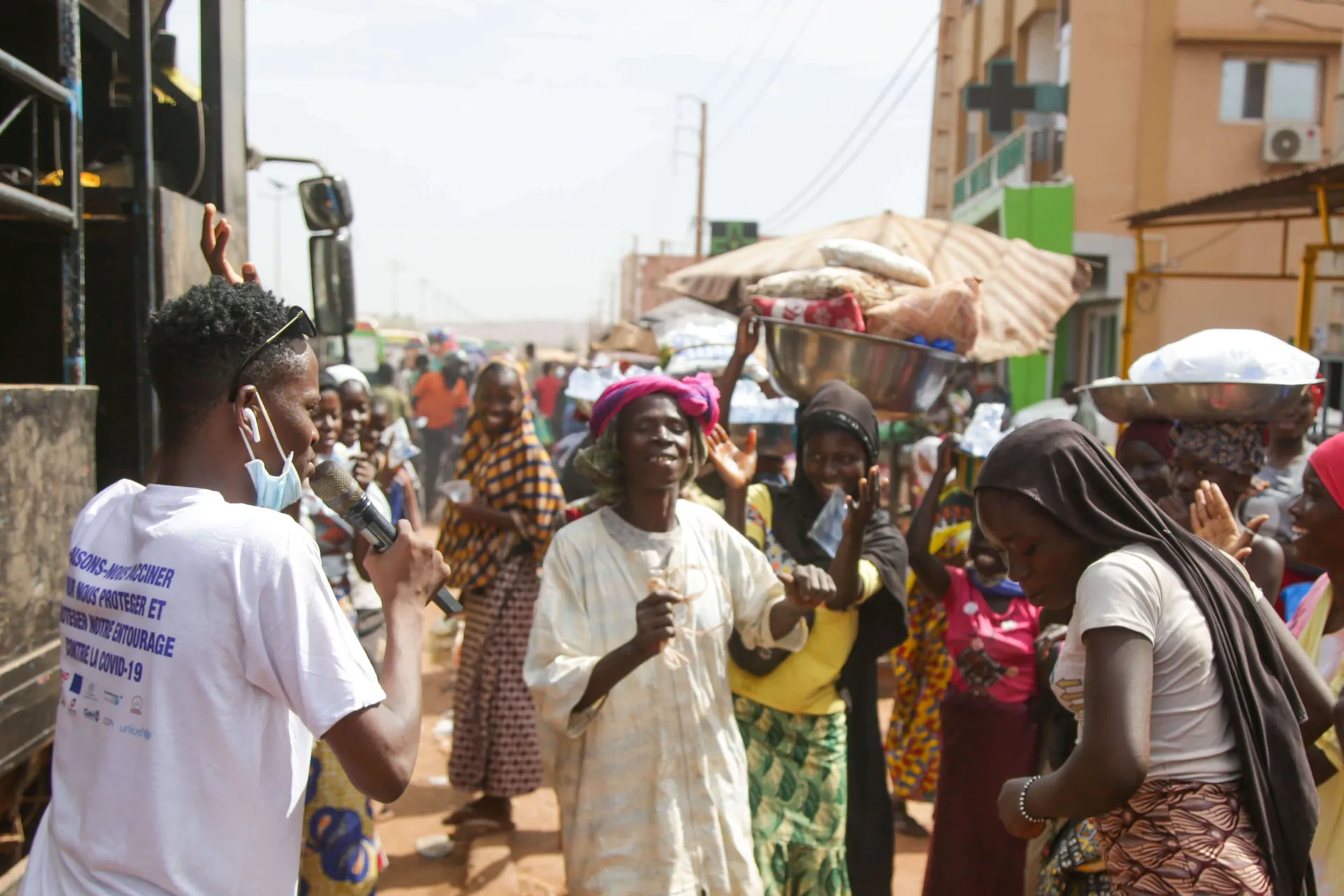
What strikes me is the senior citizens who are not informed. When we go to them and inform them, they are happy, and then they dance.
With a population of 20 000, the city of Ménaka is at the northeast of Mali, close to the frontier with Niger. Regional security is often volatile and violent, with frequent armed attacks and constricted delivery routes – and the journey is as arduous as it is dangerous.
In December 2022, Ménaka and its surroundings were included in a Malian vaccination campaign against COVID-19 . The vaccines traveled 1,500 kilometers by plane to reach their destination.
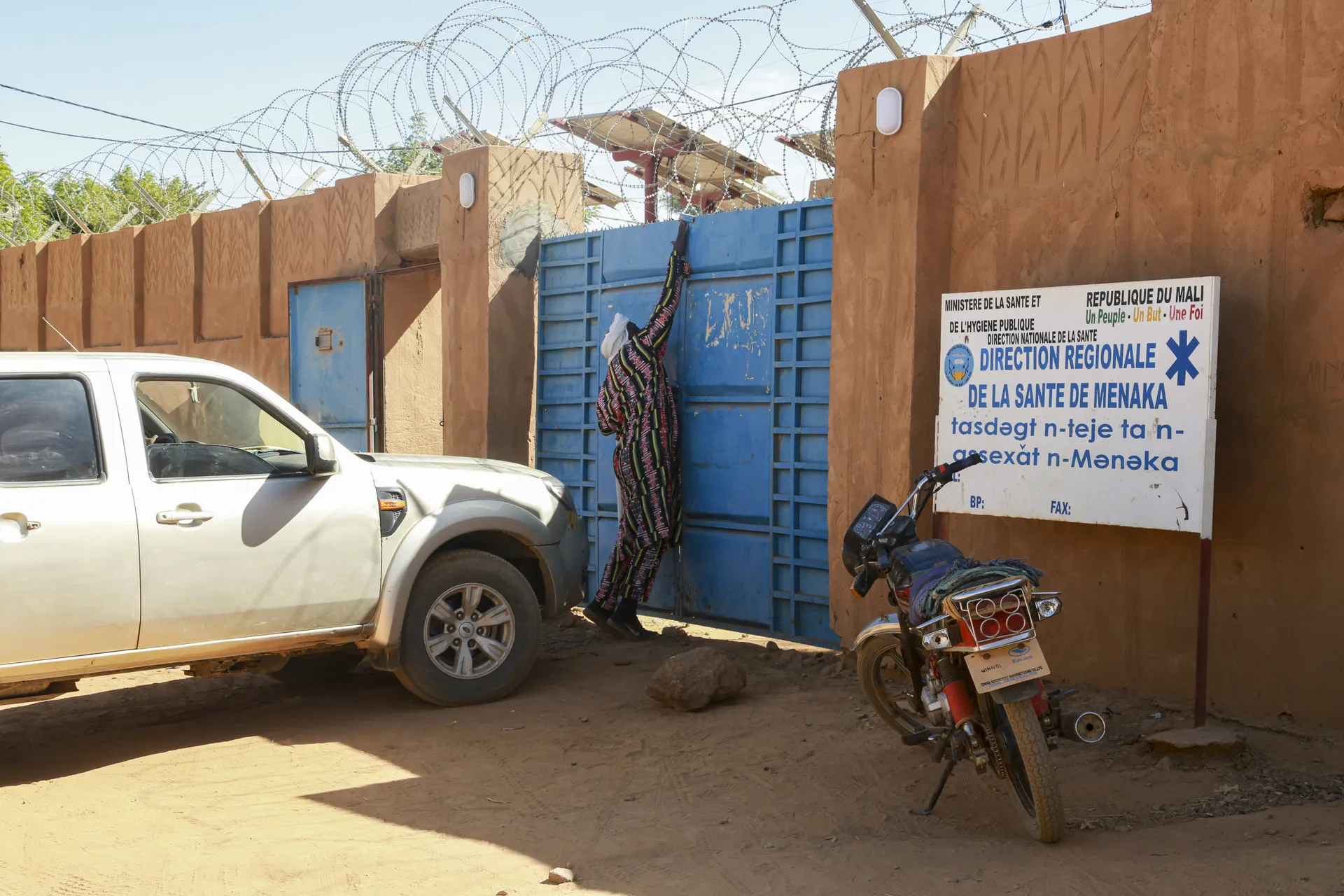
Ménaka
Mali
This is why we go to people in crisis situations to listen to them, comfort them and accompany them.
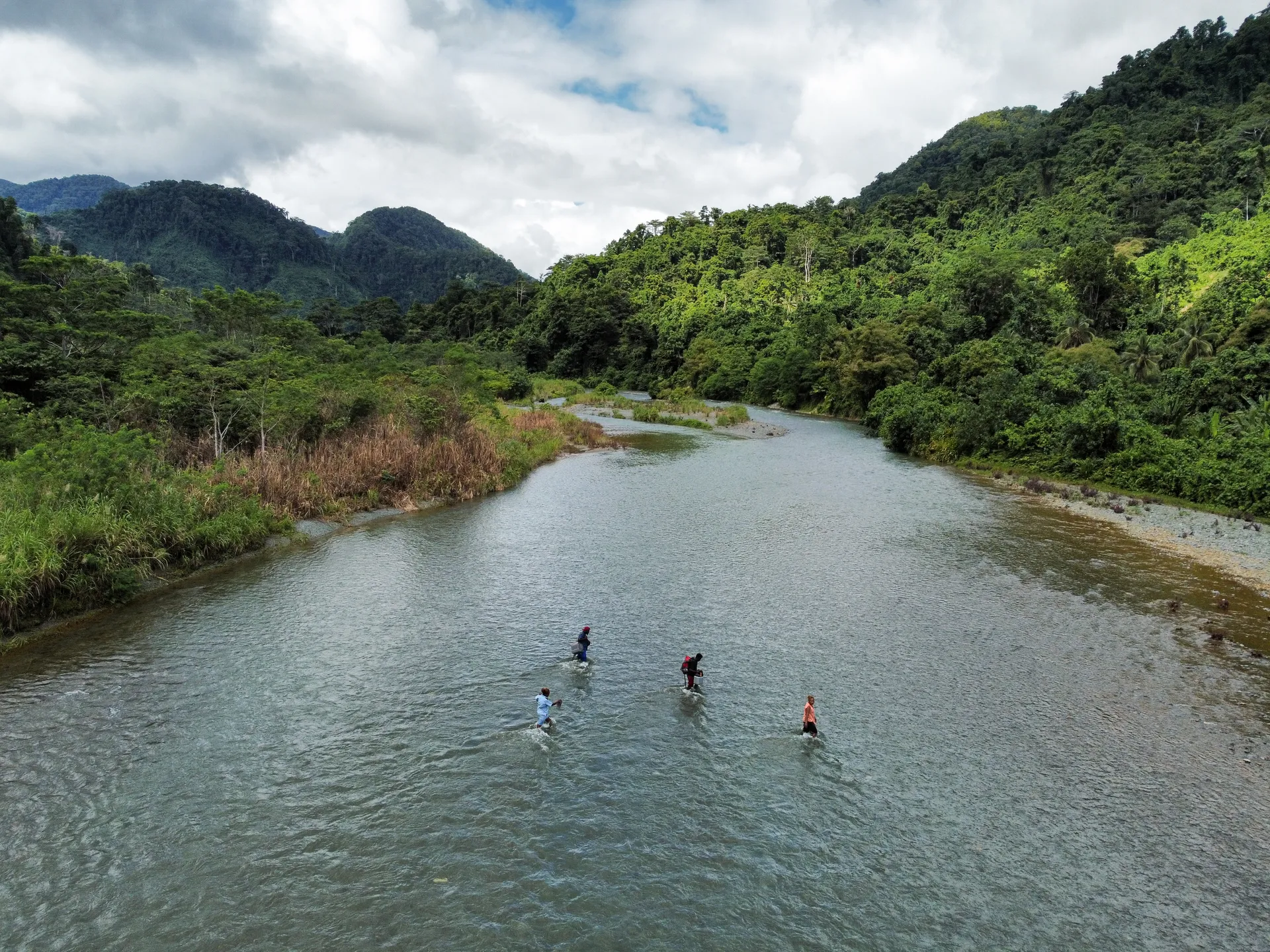
Solomon Islands
Many rivers to cross
Solomon islands COVID-19 vaccine primary series vaccination rate
Source: WHO-UNICEF COVID-19 Vaccination Information HubThe Pacific Island nation of the Solomons spans 900 islands, 147 of them inhabited.
It is a very challenging logistical environment for vaccine delivery, with many hard-to-reach places and complex geography: some islands can take hours to reach by boat, and the isolated interior of some of the larger islands, particularly Guadalcanal, features many rivers. They are life-sustaining but can flood quickly; with no bridges, they must be trekked across by car or waded through on foot.
COVID-19 prompted border closures and restricted outside access to the Solomons, with very few exceptions, through June 2022. There were sporadic vaccine deliveries, however the first community outbreak of COVID-19 didn't reach the Solomons until January 2022. At that point, the primary series vaccination rate was low, at around 12% in a country with a population around 700 000. The routine immunization program in the country is robust, however. Even as COVID-19 drastically upended livelihoods and movement in the Pacific Islands – including for routine childhood immunization – vaccination teams were able to navigate the challenging geography and circumstances in the Solomons to deliver vaccines and routine health care to people. And people made sometimes arduous journeys on foot to obtain them.
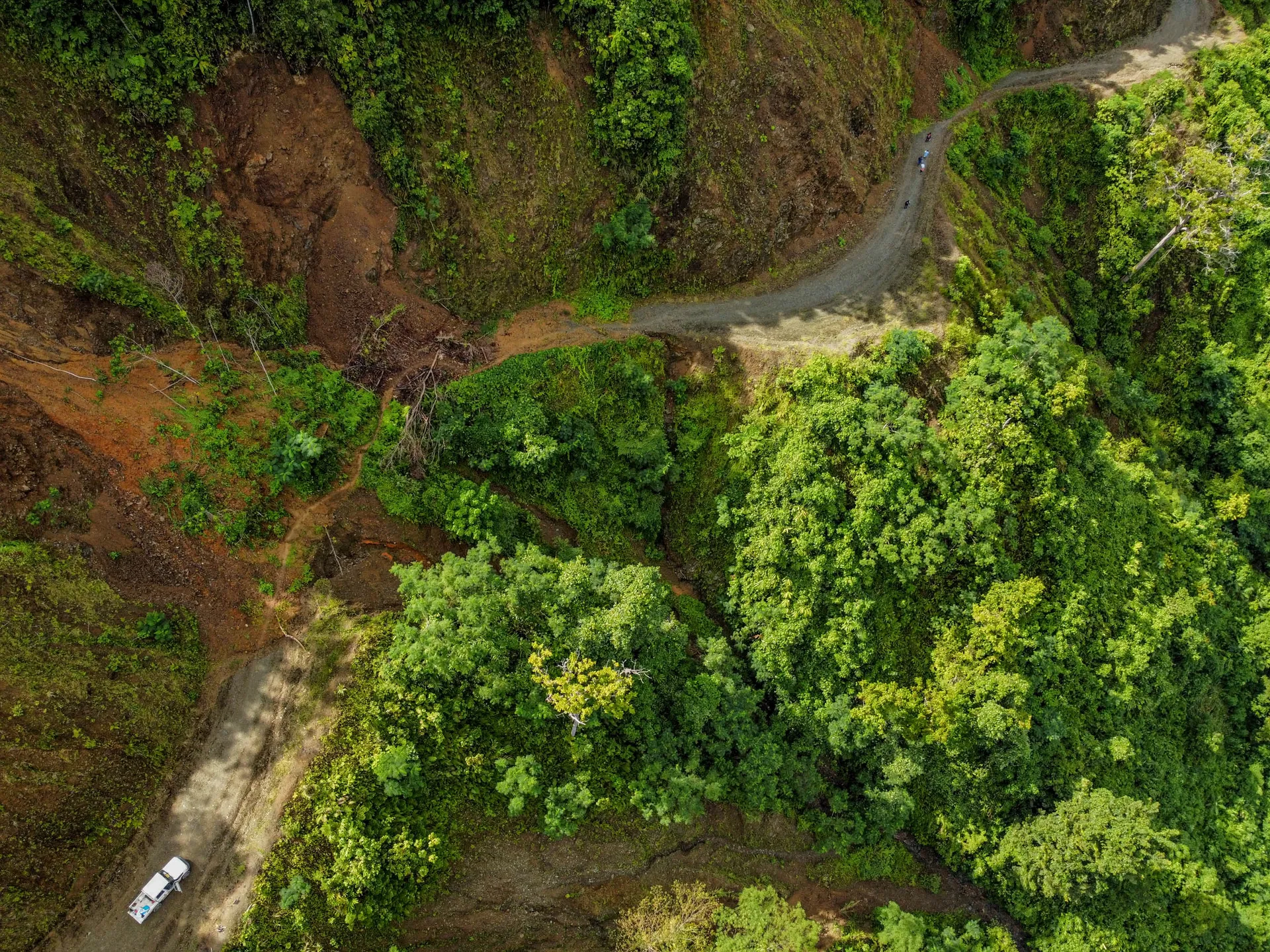
Aerial view of a landslide which damaged the access road to Kuvamiti village
Looking at the logistical challenges the Solomon Islands faced and comparing their progress to other countries who have no such challenges, they have done quite well. Most of the human resources are in Guadalcanal, in the capital area province. In other provinces, they don’t have as many people able to vaccinate.
As of October 2022, the COVID-19 primary series vaccination rate in the Solomons was 32%.
The Solomons archipelago as a whole is spread out over 28 000 square kilometres, most of it water. Finding and retaining qualified health and care workers is a constant challenge. This makes trained vaccinators like nurse Rosemary Raikekeni a vital link to health care for the hard-to-reach parts of the Solomon Islands, where pop-up and informal clinics are the standard.
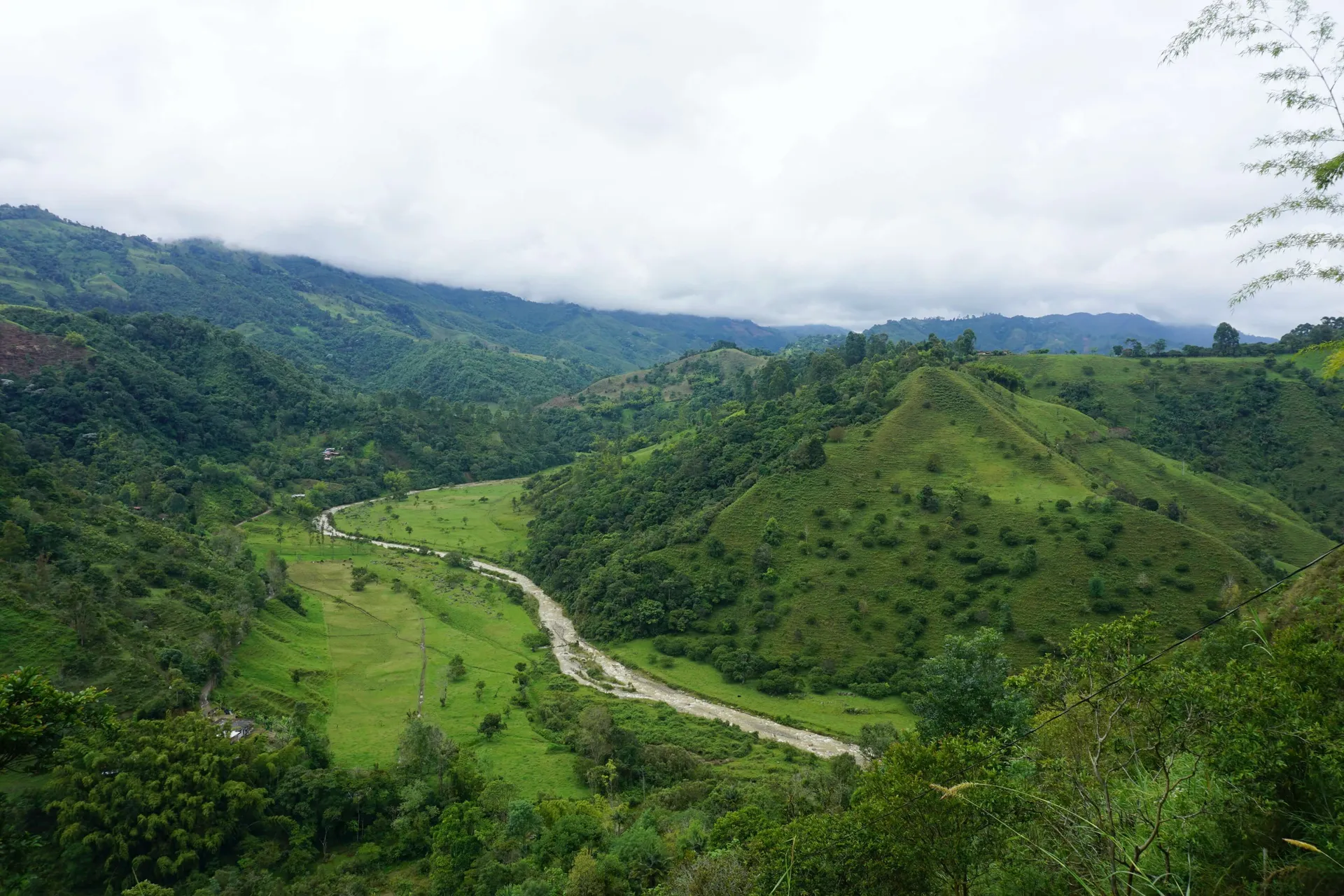
Colombia
Storytelling in Indigenous Communities
Colombia COVID-19 vaccine primary series vaccination rate
Source: WHO-UNICEF COVID-19 Vaccination Information HubIn 2021, Colombian health officials had an urgent problem. COVID-19 was spreading fast among its nearly 2 million indigenous people.
Many were in hard-to-reach regions like the remote Amazon rainforest. Yet getting the vaccine to these deeply traditional ancestral communities was not the key difficulty. Persuading them to take it was.
By August, only 6% of Indigenous Colombians had been vaccinated – a worryingly low rate of uptake in a population already vulnerable to chronic disease. It was clear many in these communities didn’t trust what they were hearing about the virus. They thought that accepting the vaccine would cause them harm.
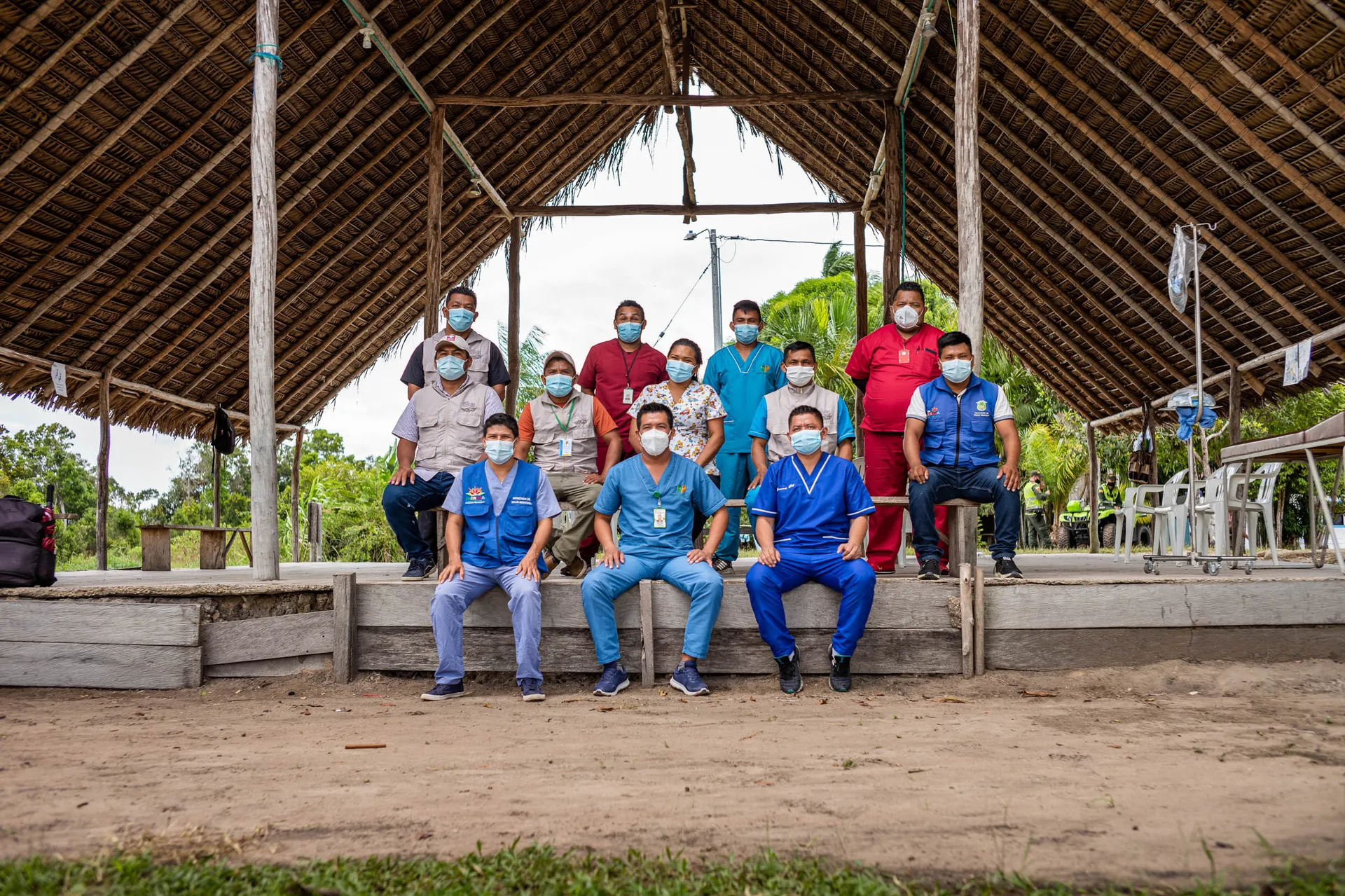
Concordia, Colombia
Members of a vaccination team administering COVID-19 vaccinations to the indigenous community of concordia.
Health authorities needed Indigenous Colombians to understand the vaccine was safe not only medically, but culturally – and that accepting it would not flout their traditional rites and beliefs but align with them.
This would require bespoke messaging for each indigenous community, spoken in their own language and with the endorsement of their cultural leaders. A series of training workshops using a methodology called "diálogo de saberes" rallied Indigenous leaders and the young, to help them encourage vaccine uptake within their communities. The campaign favoured oral storytelling. It used radio broadcasts and video clips and sent Indigenous translators along with vaccination teams. The strategy respected indigenous healing practices and the teachings of spiritual guides.
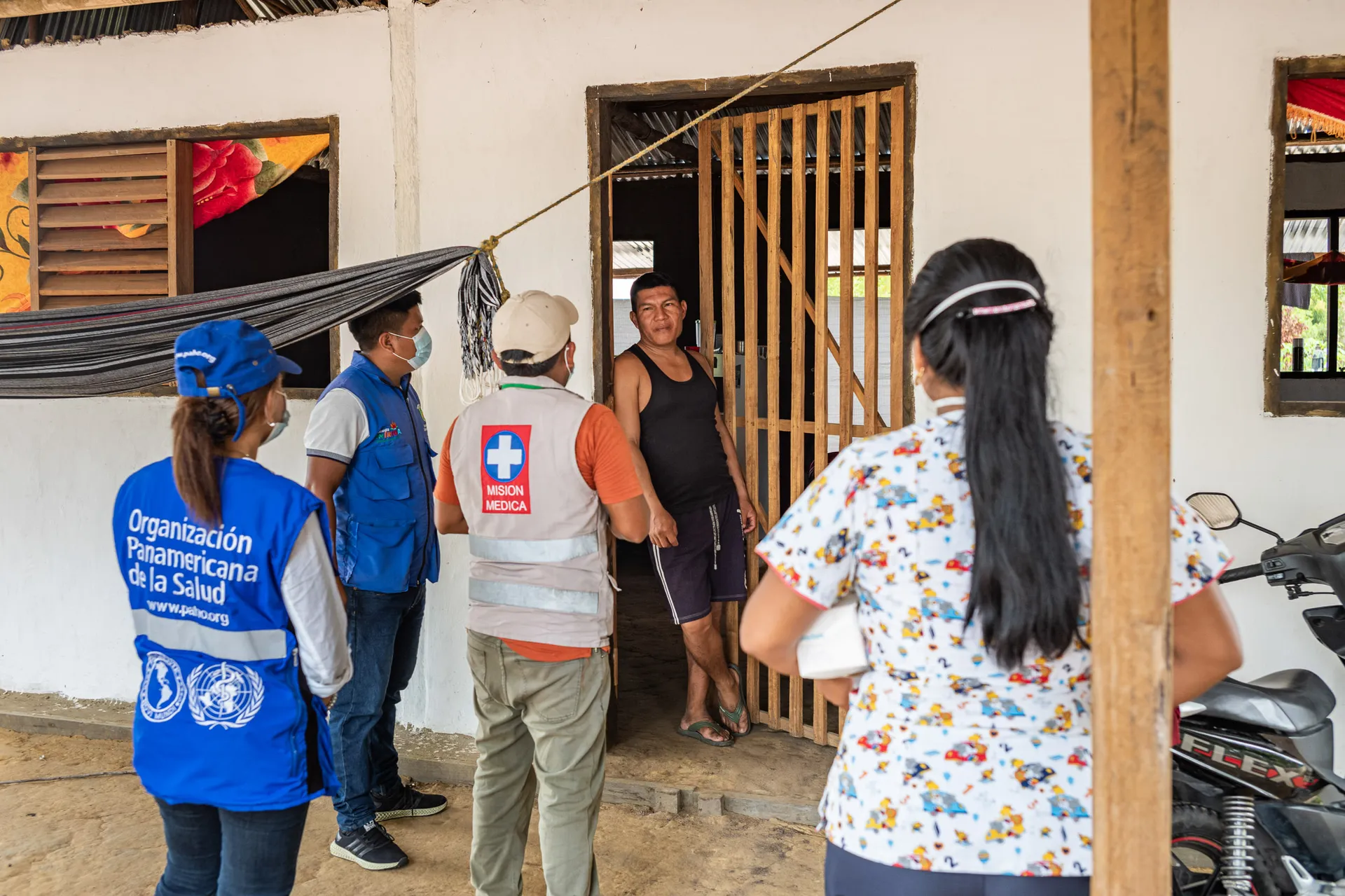
Concordia, Colombia
The diálogo de saberes methodology was used to recognize the reality of the Indigenous peoples, to know their perspective on health, and to understand the use of their own medicines to manage the symptoms of COVID-19. With this knowledge we were able to include in the words of each ethnic group prevention actions and promote vaccination, respecting the autonomy of Indigenous peoples.
